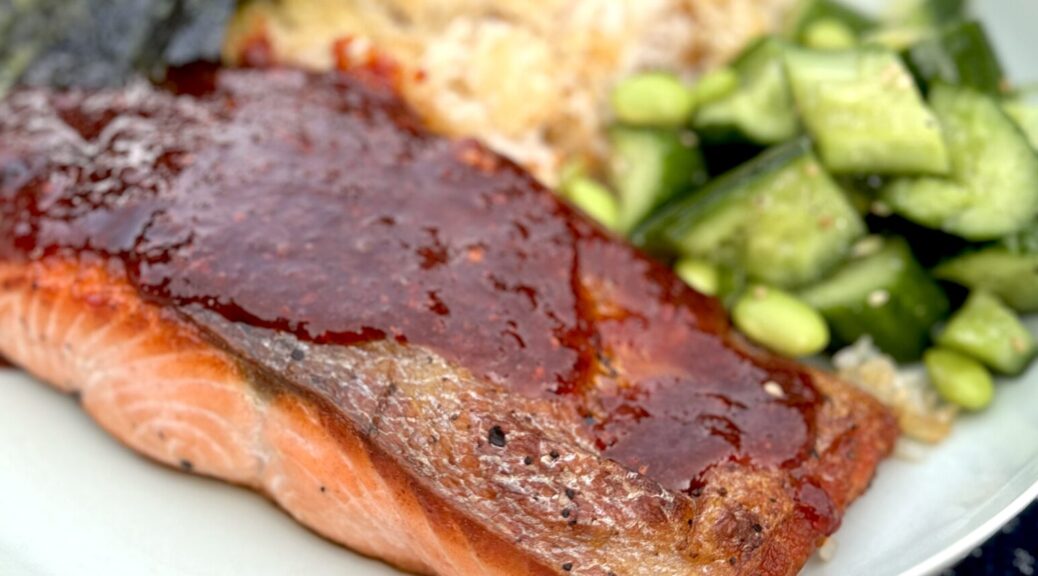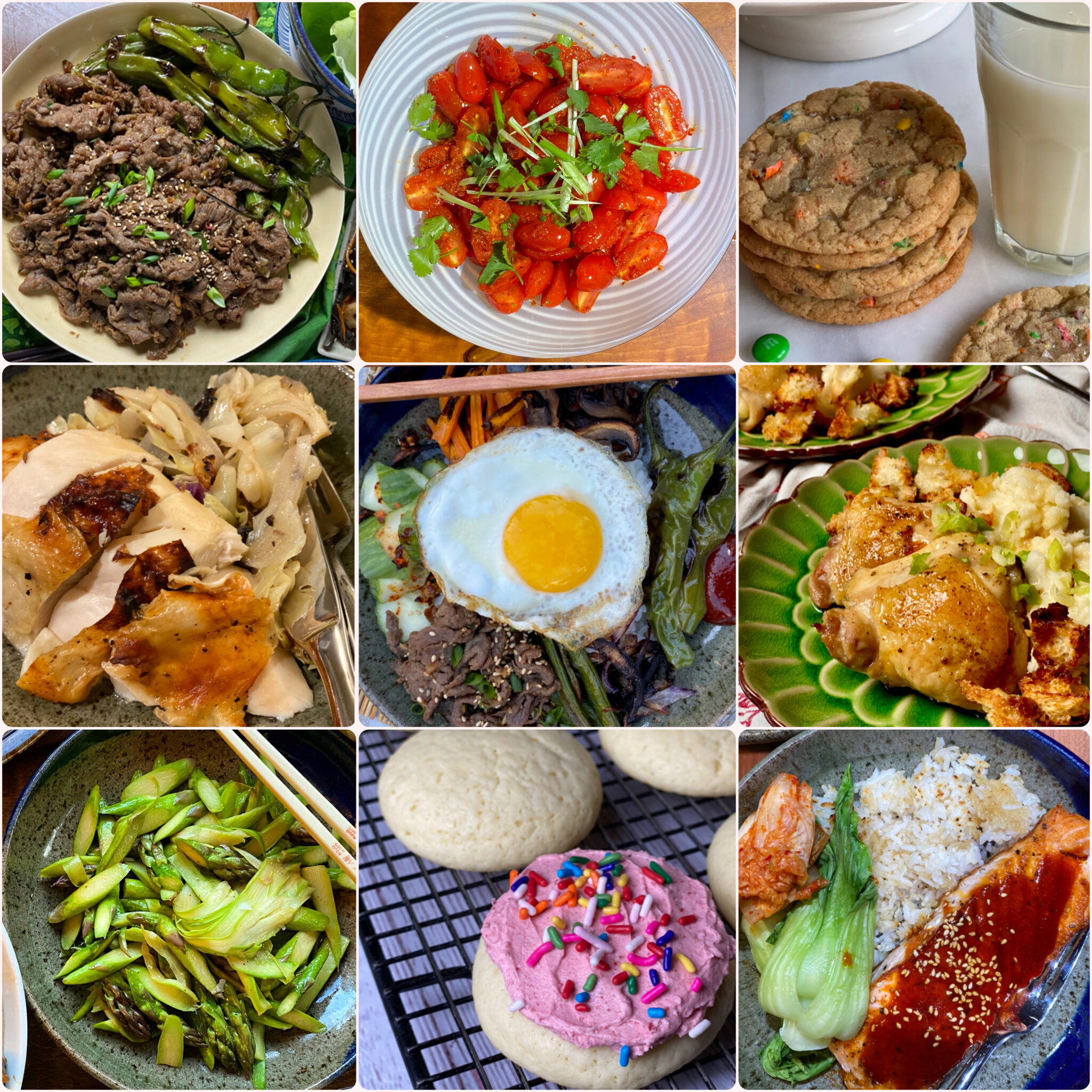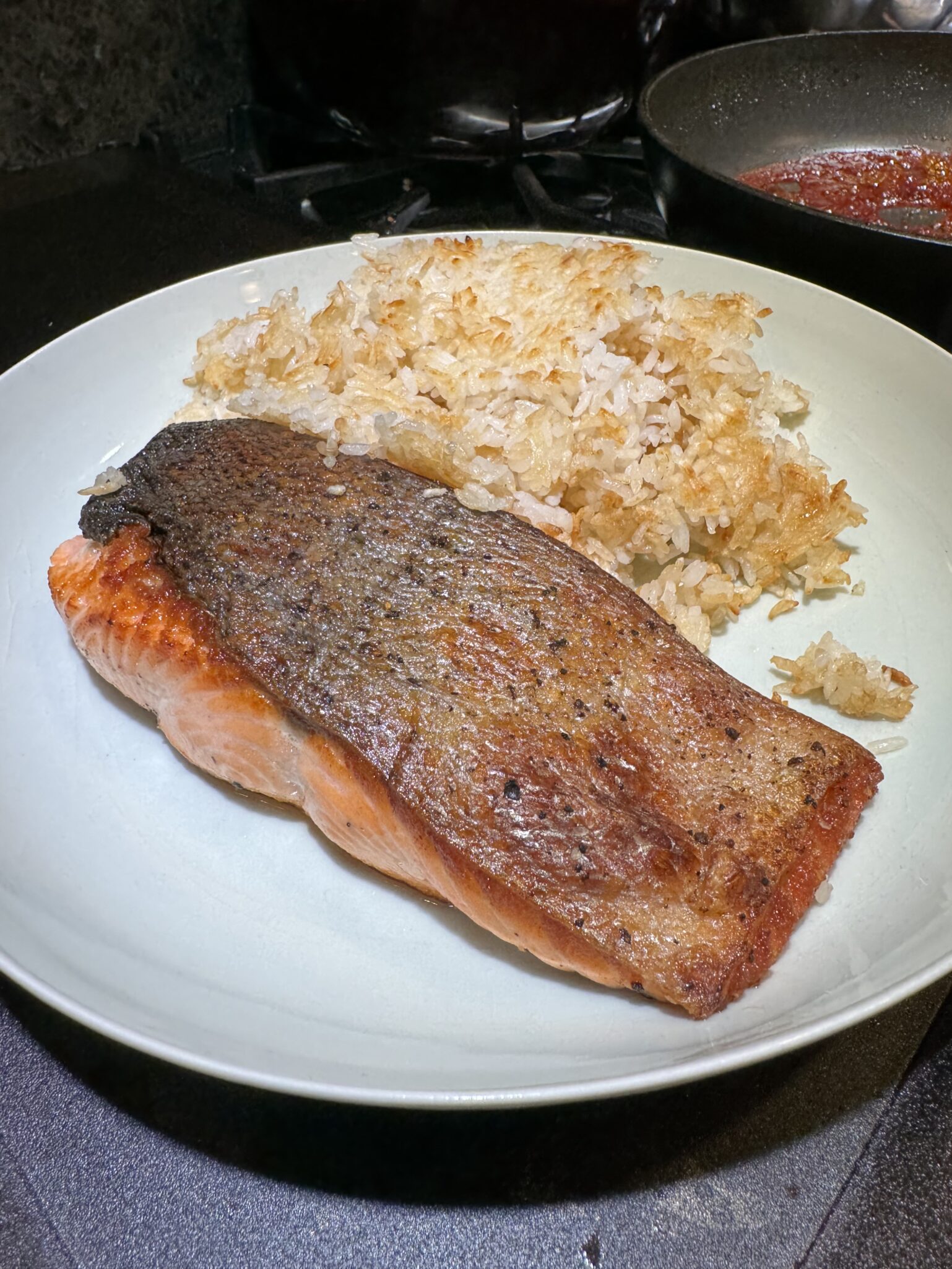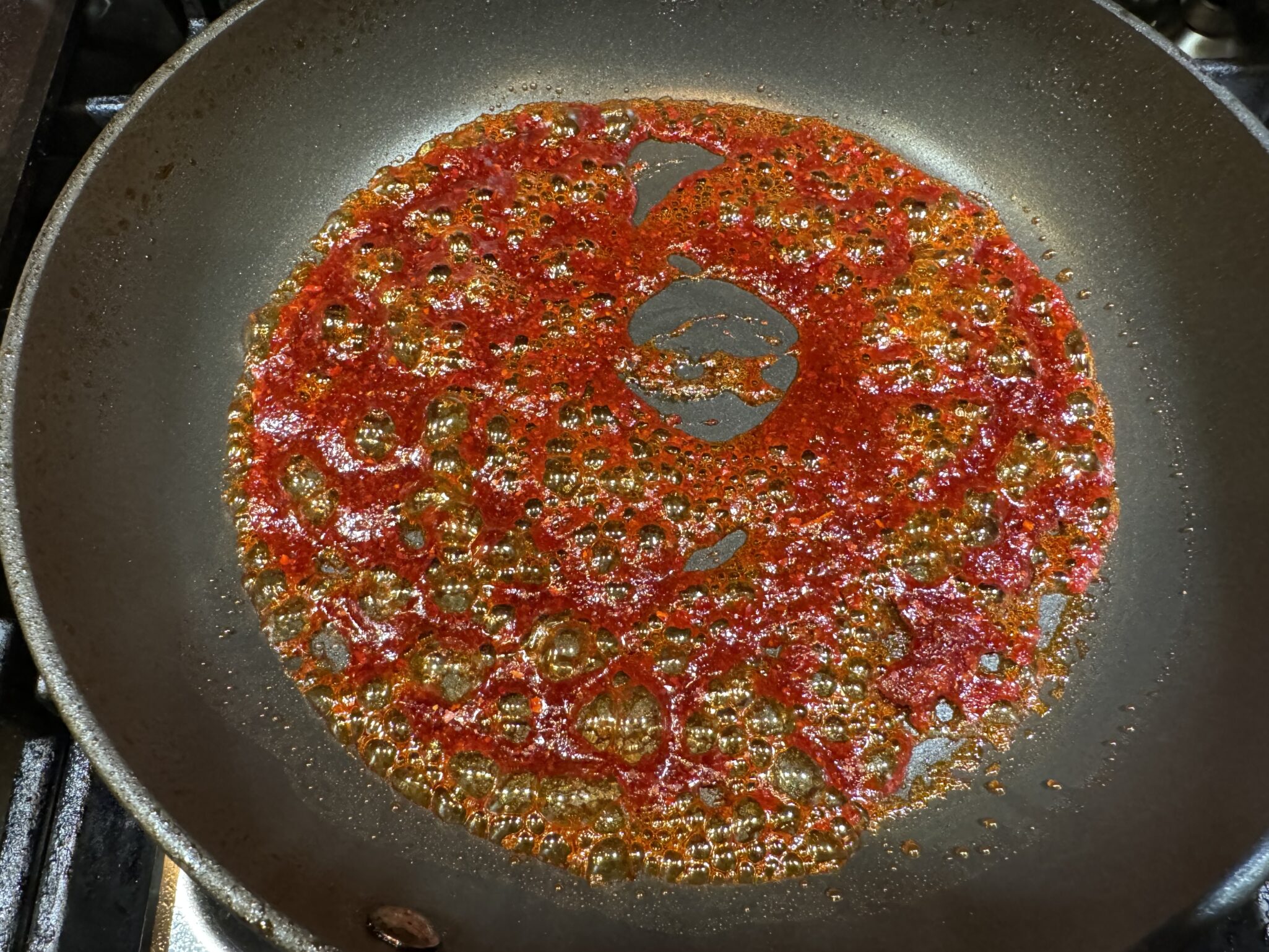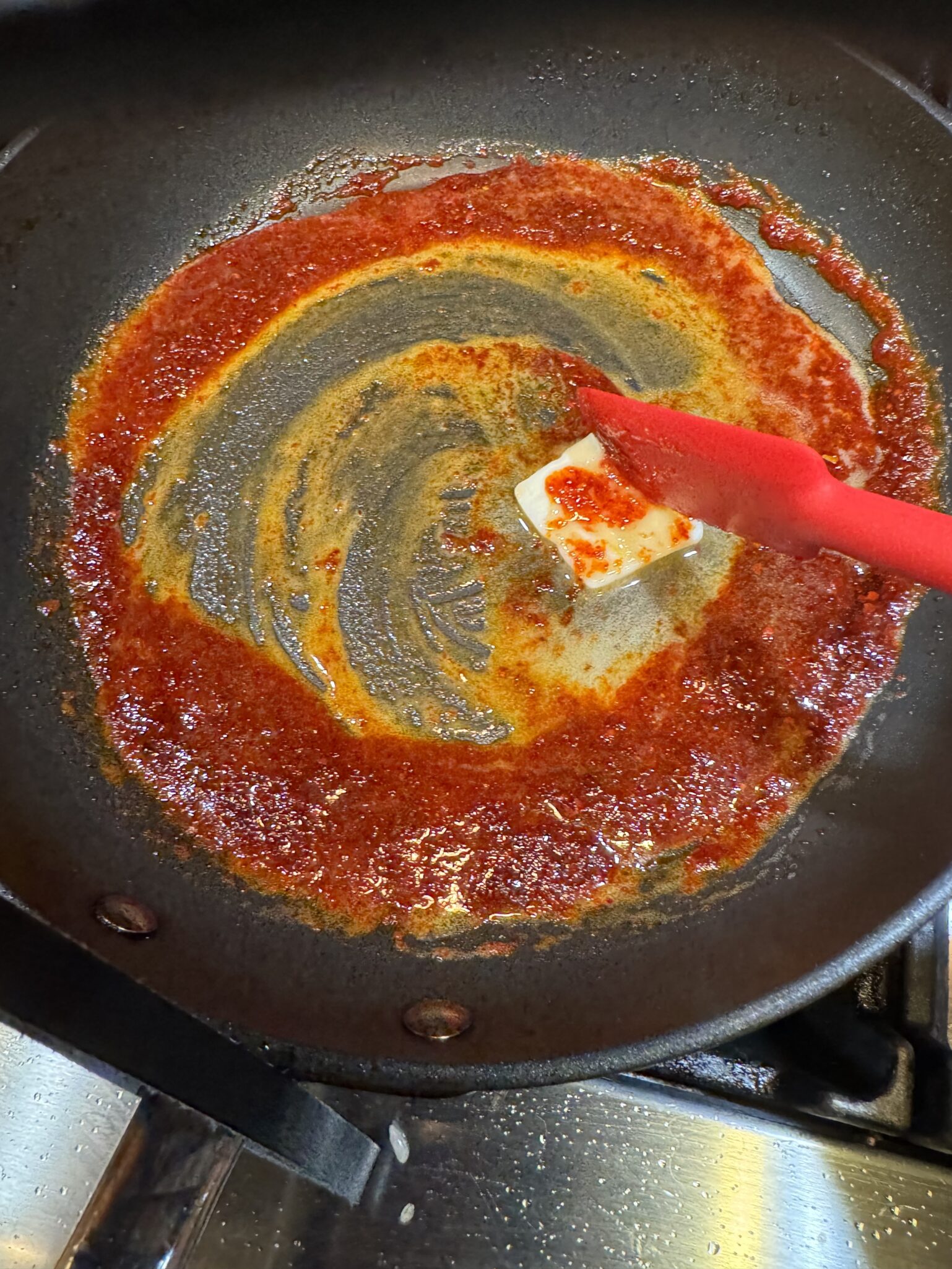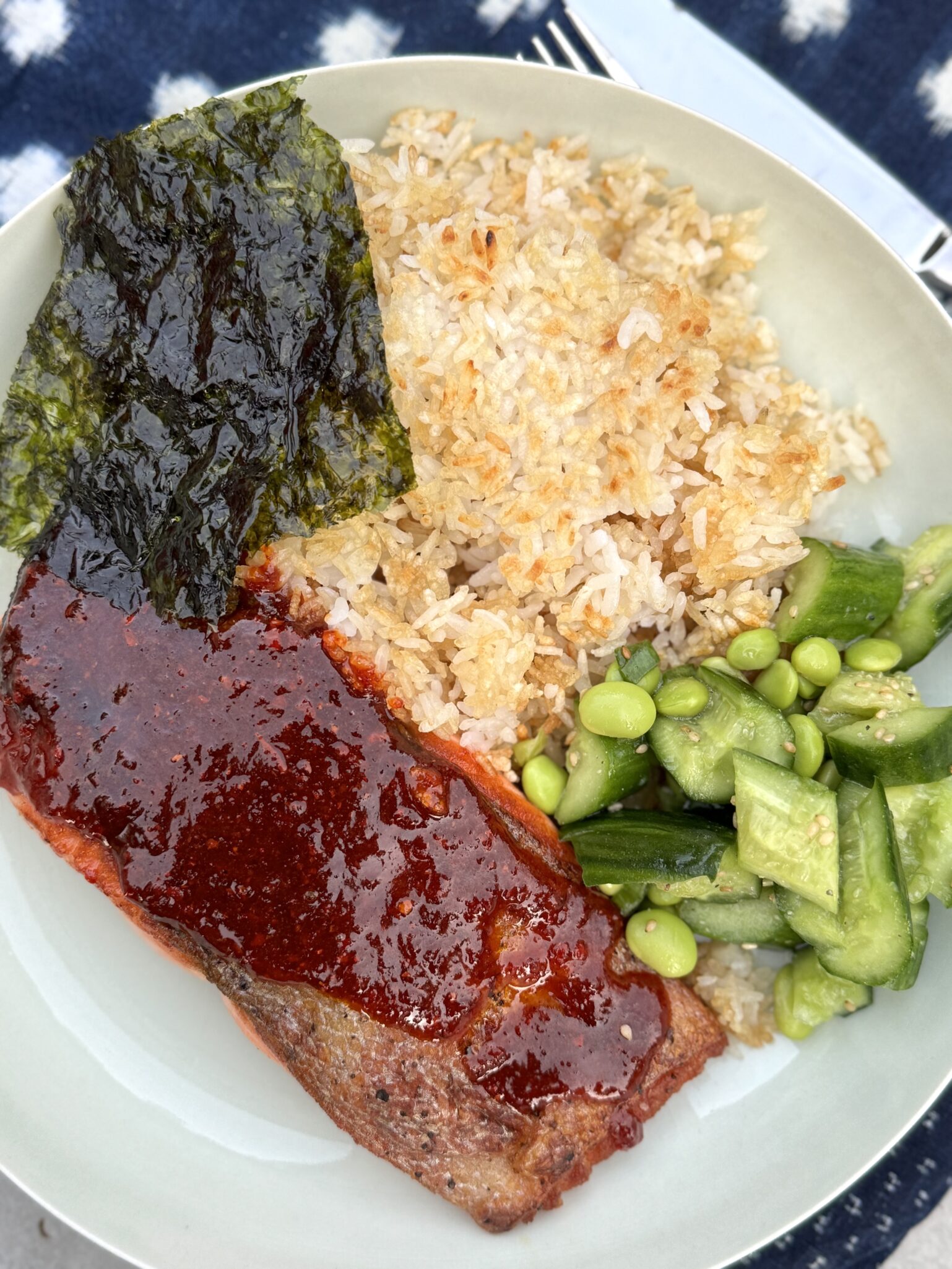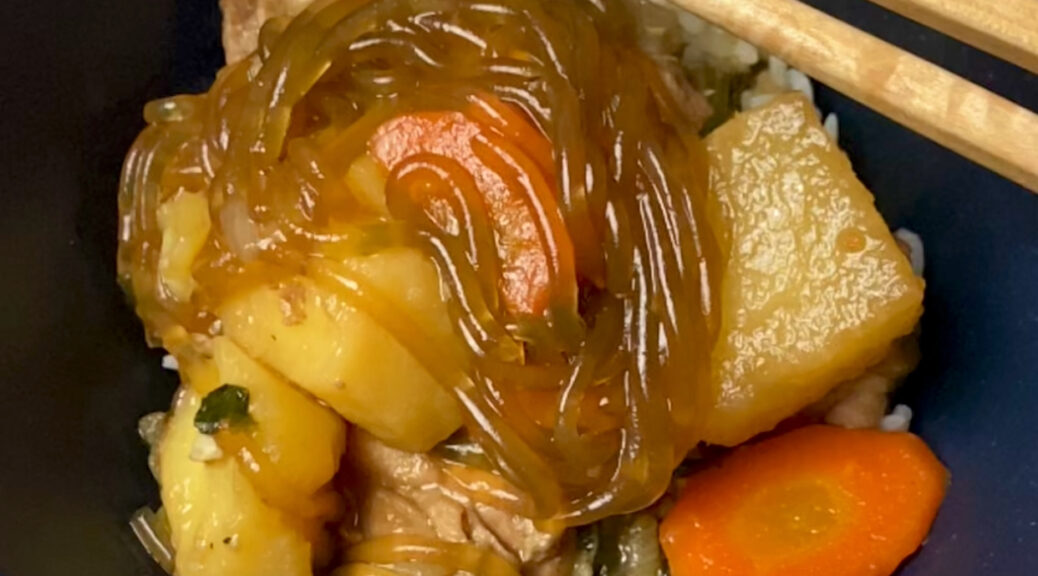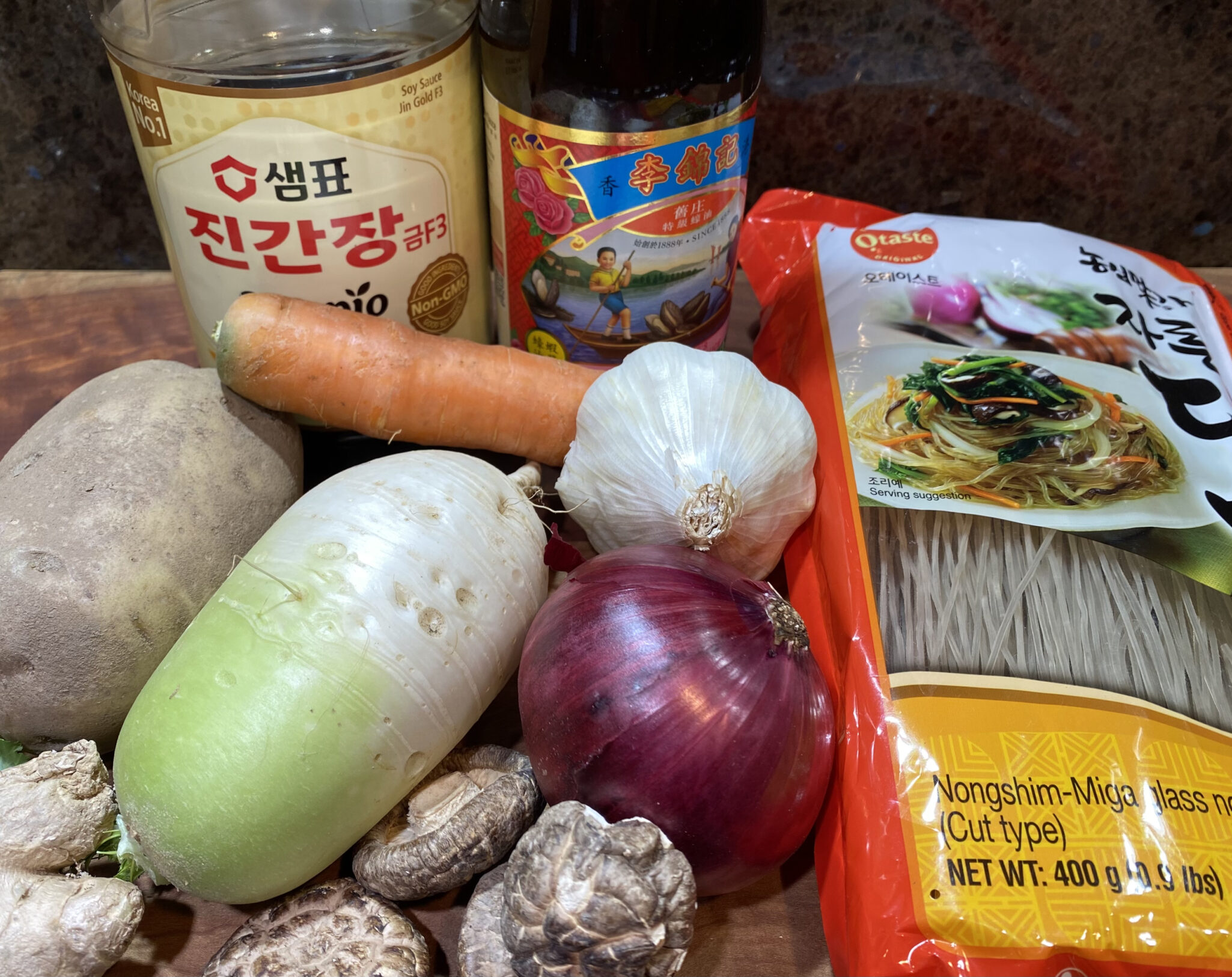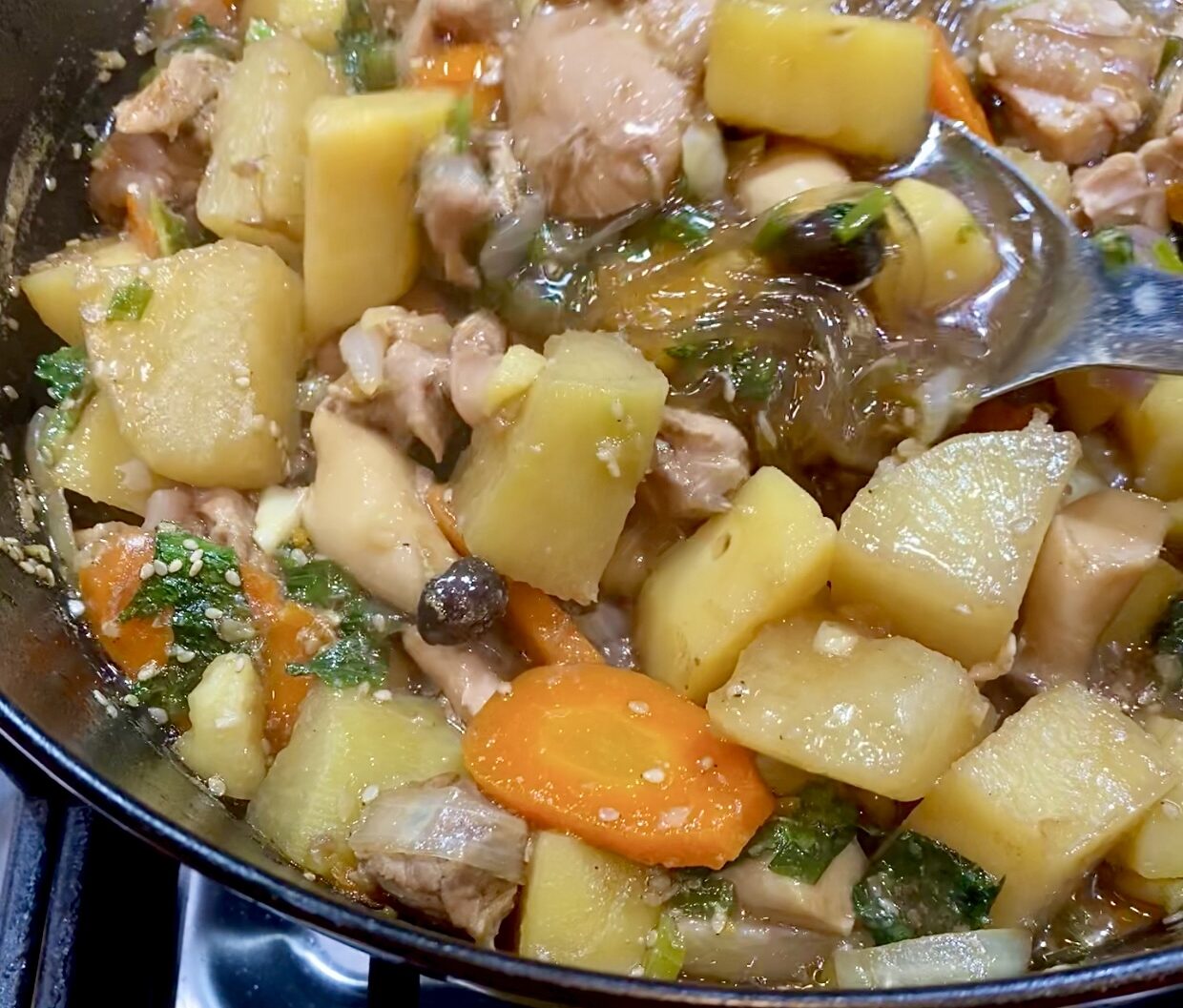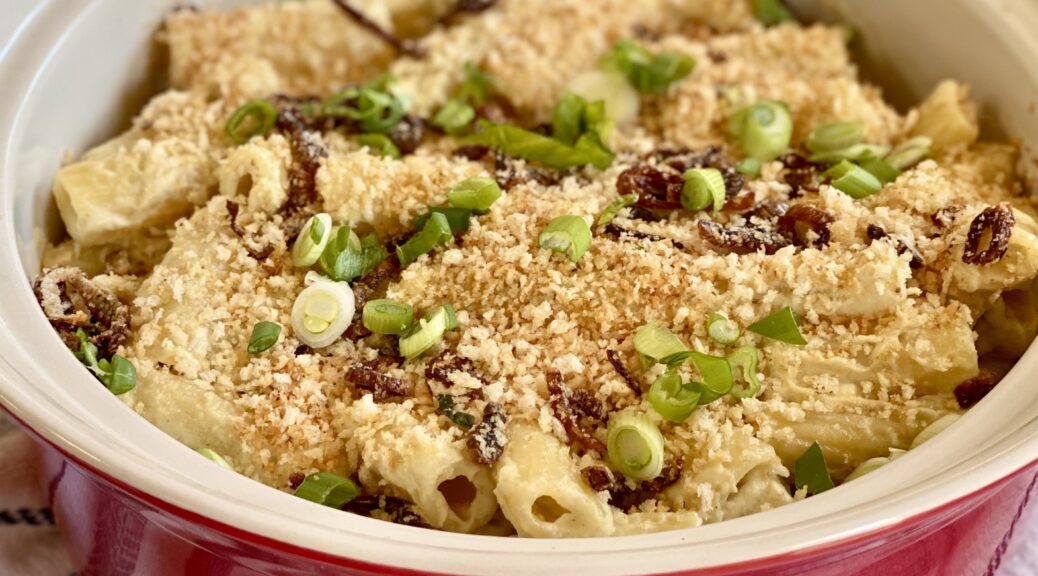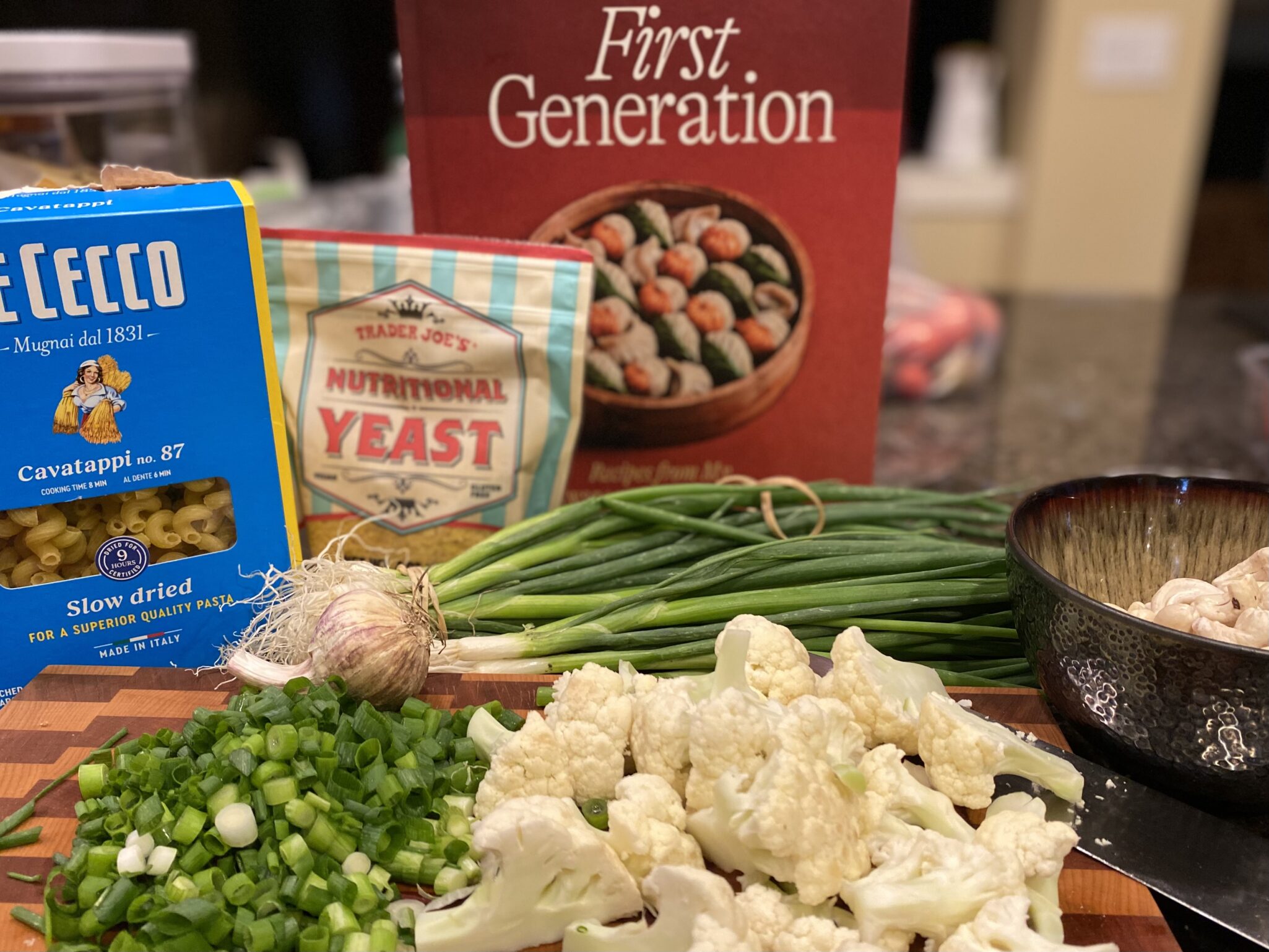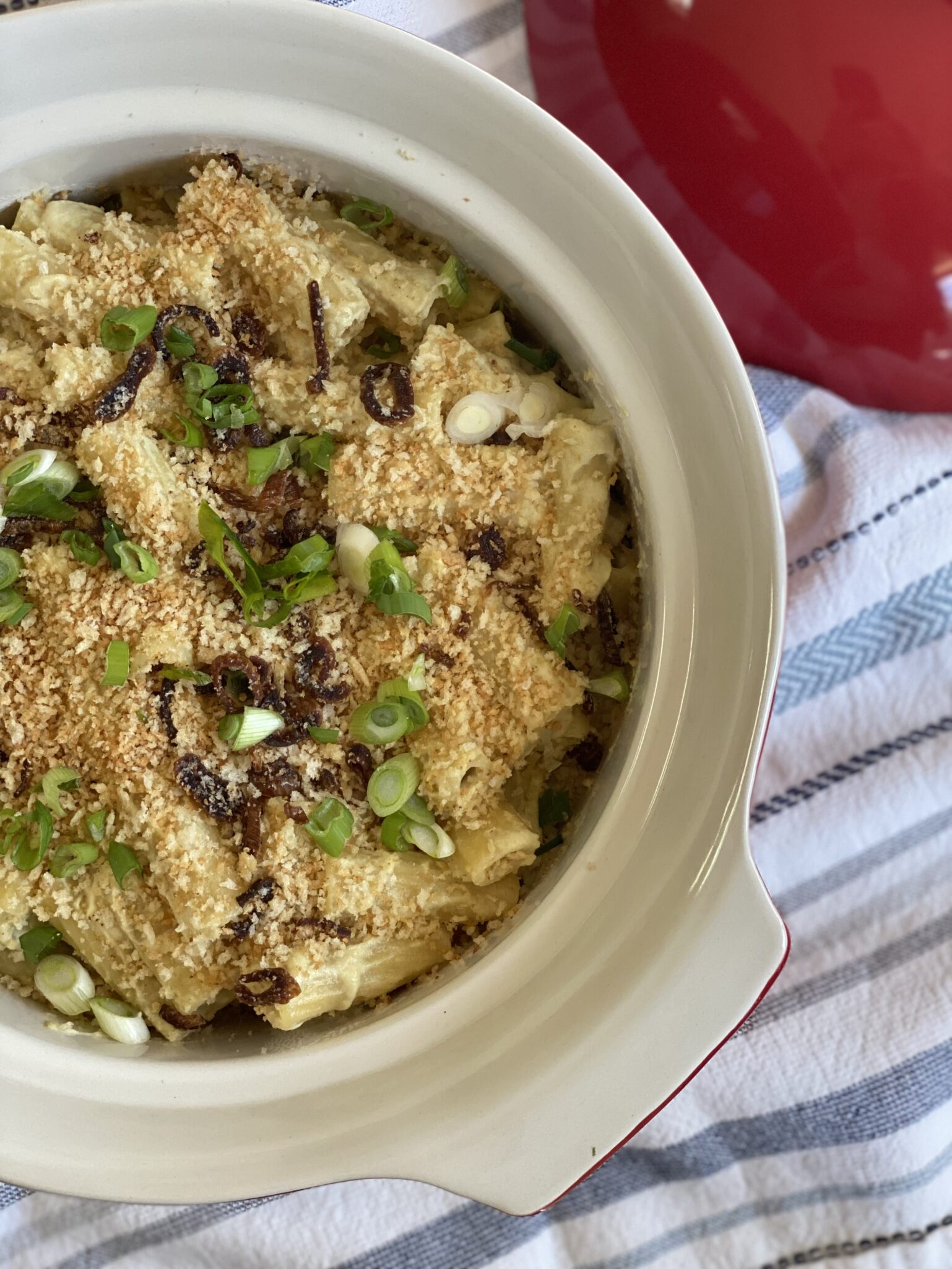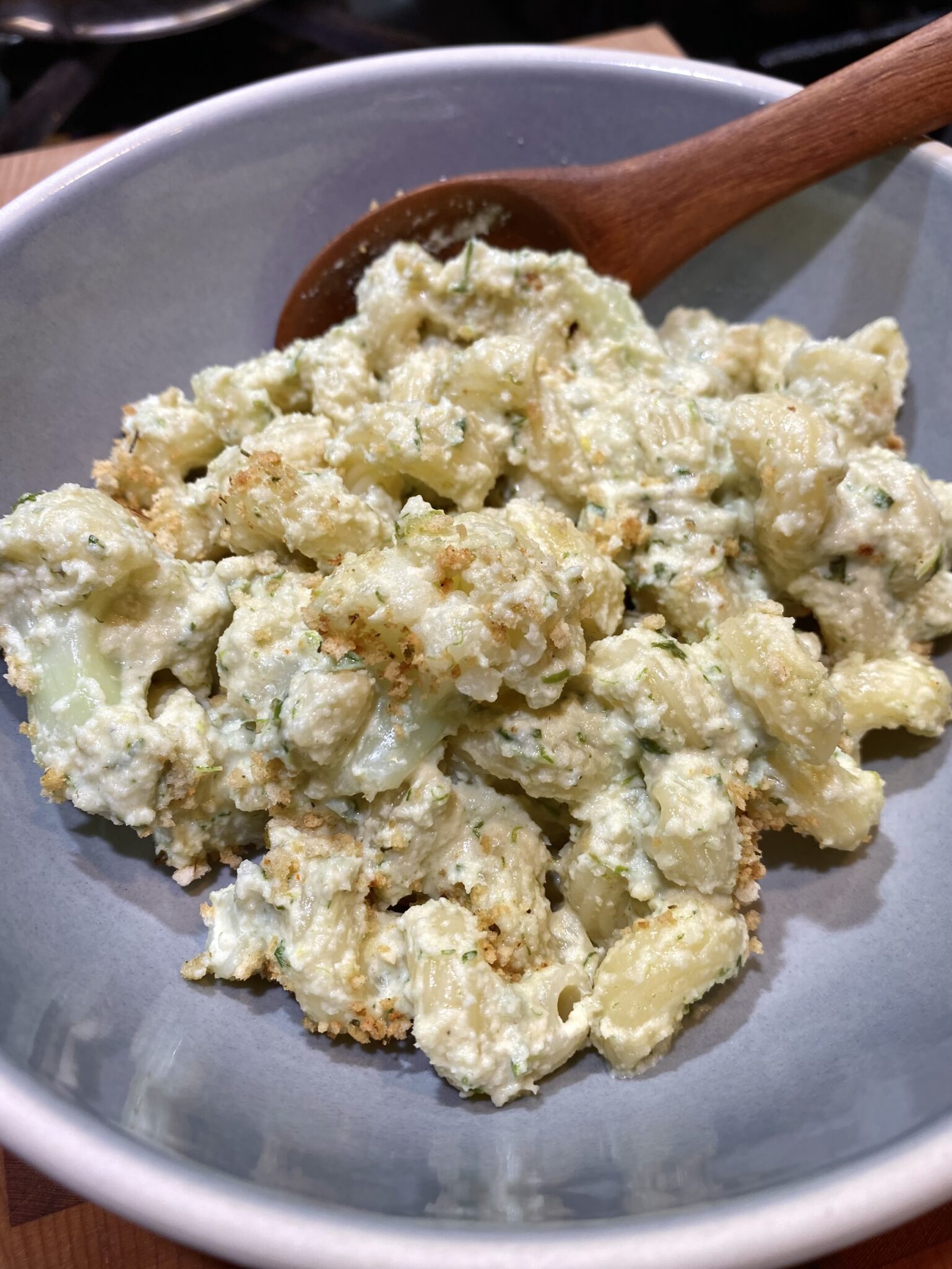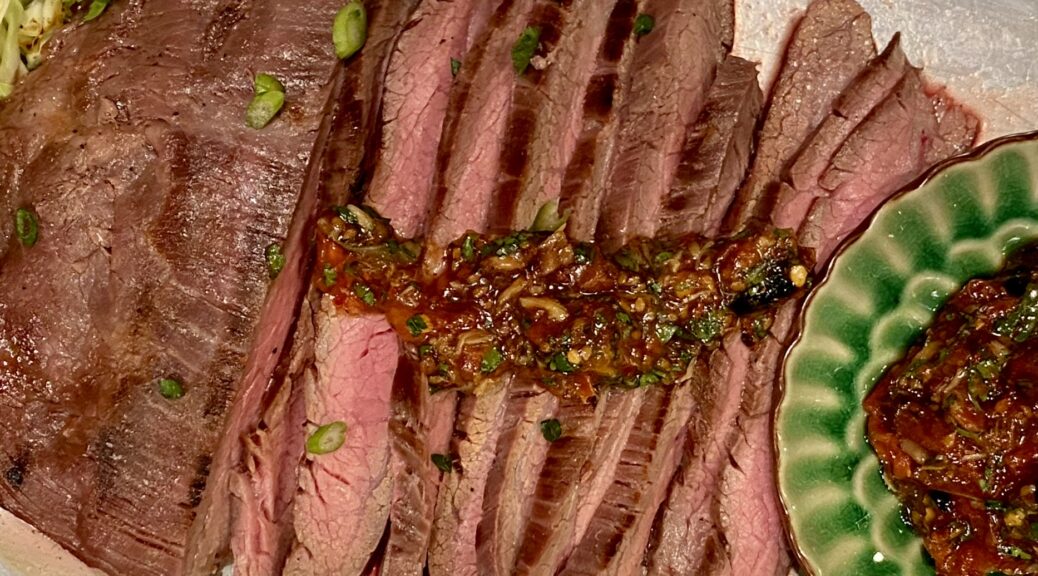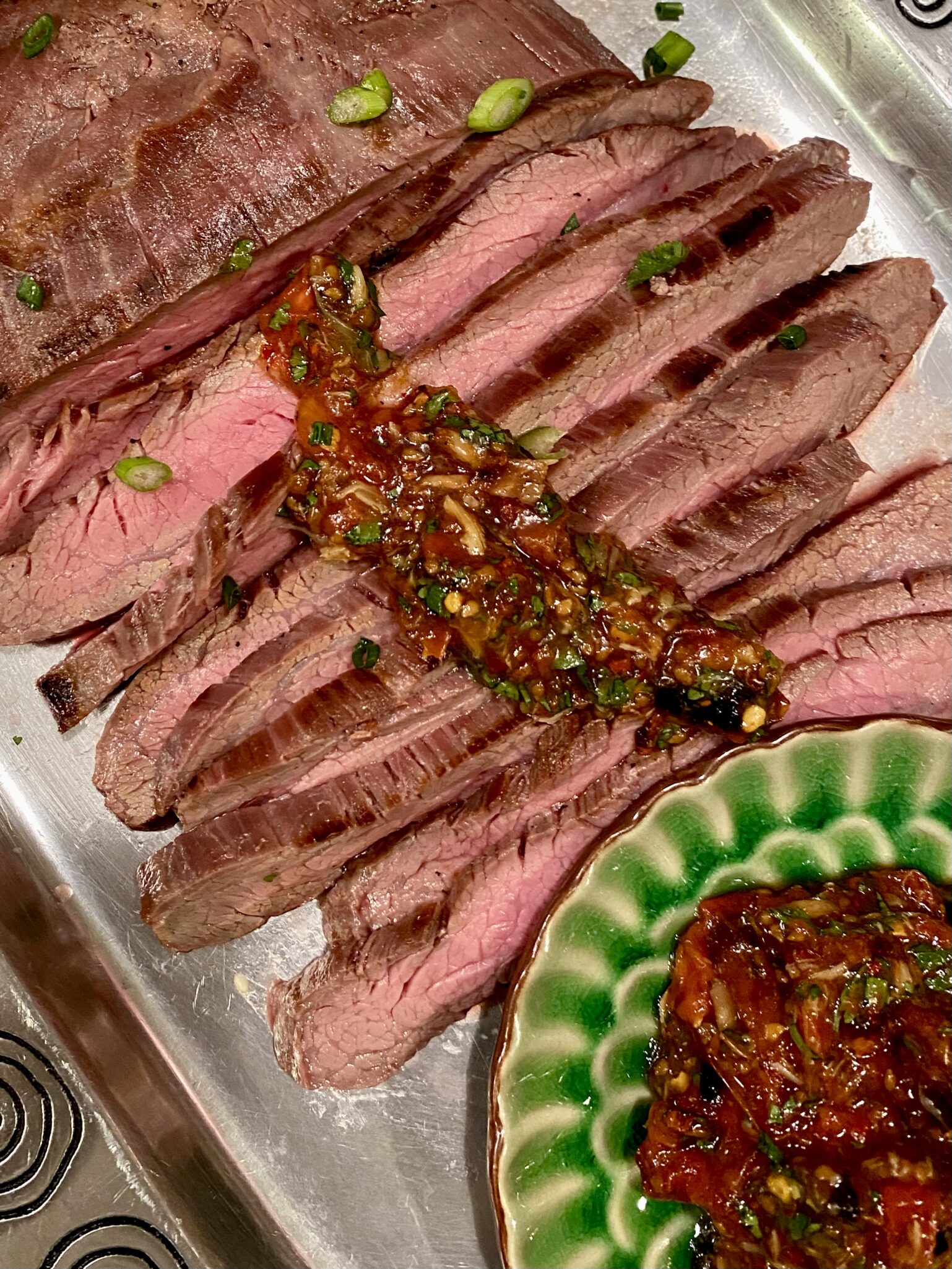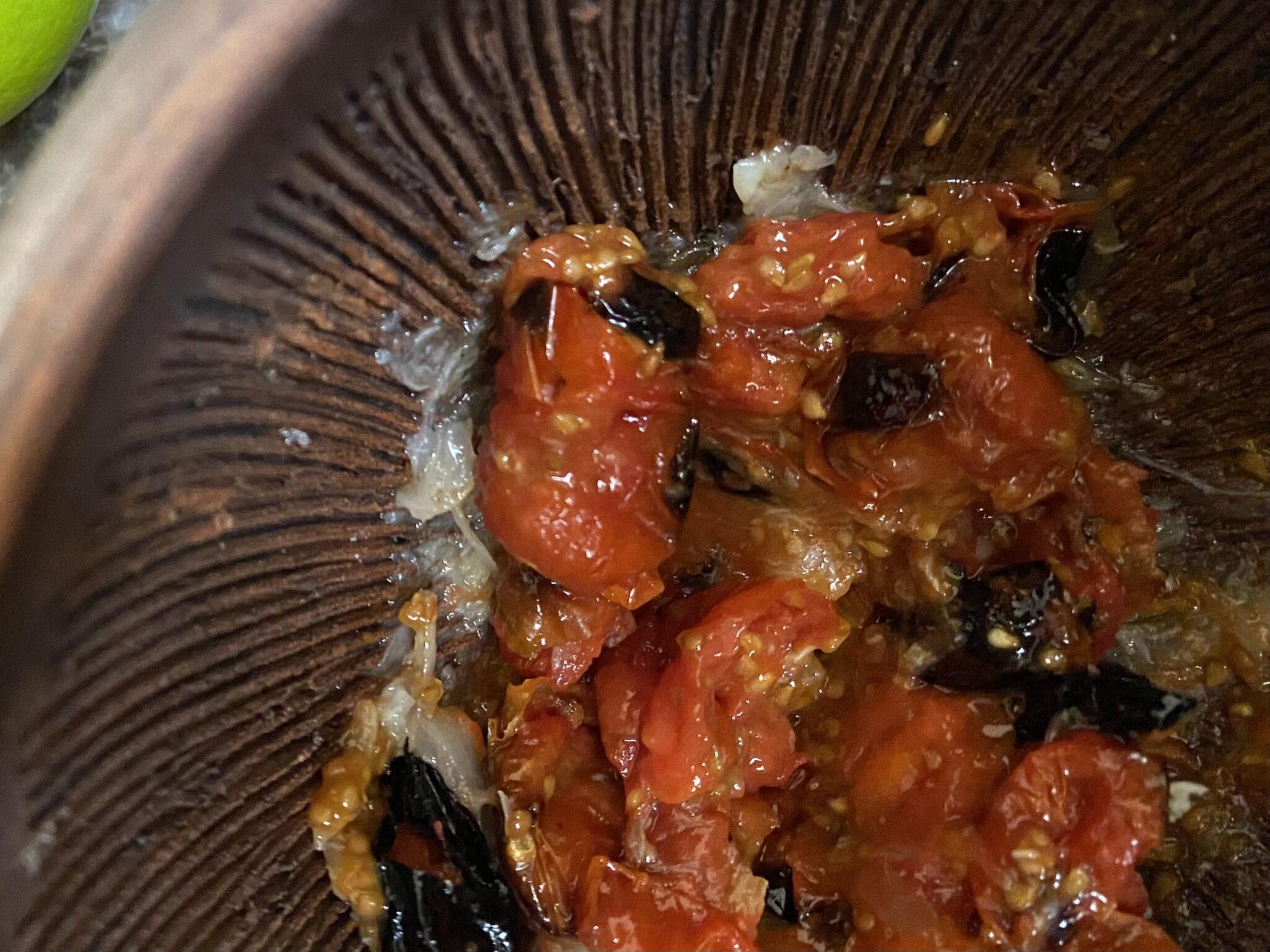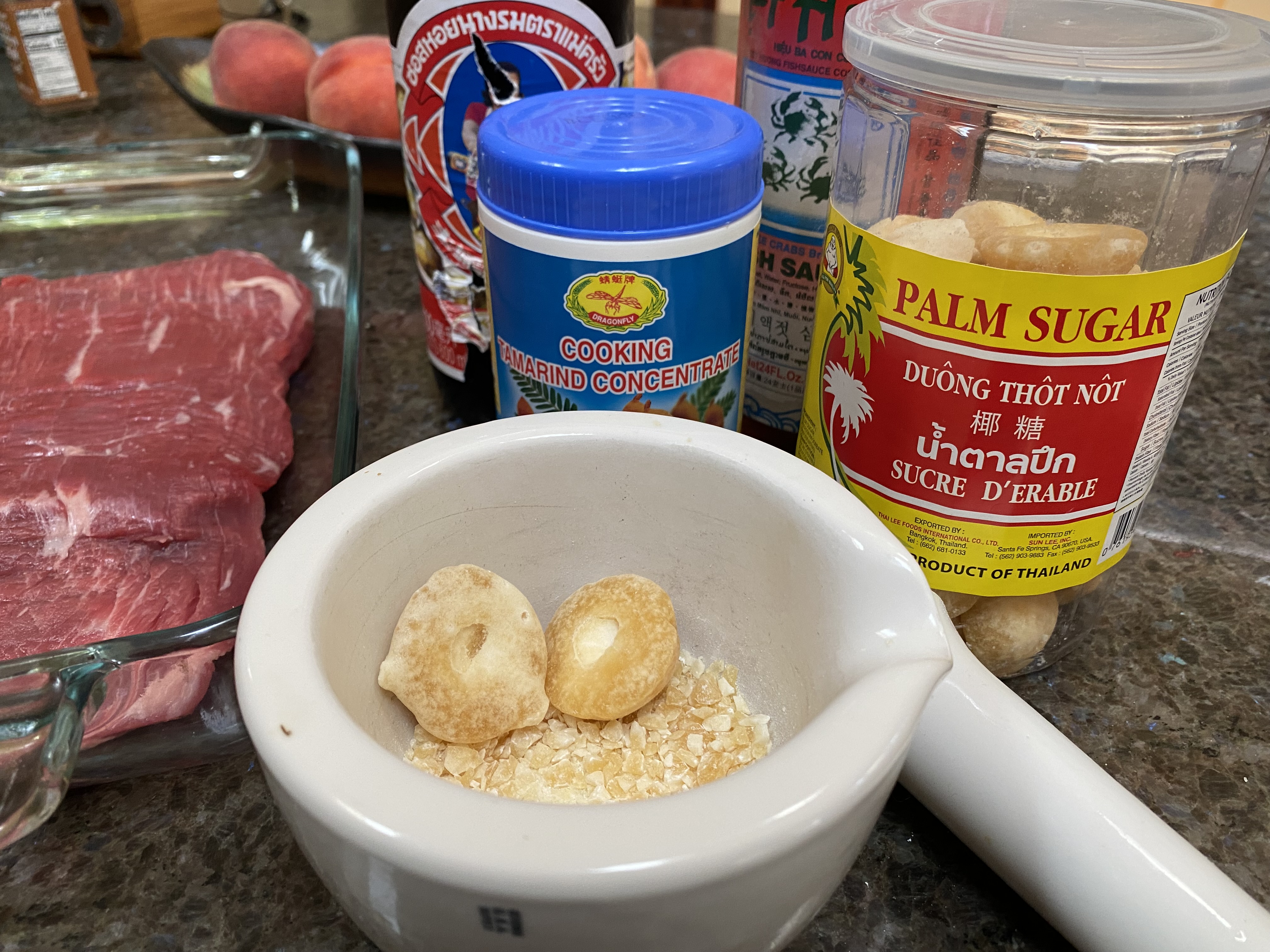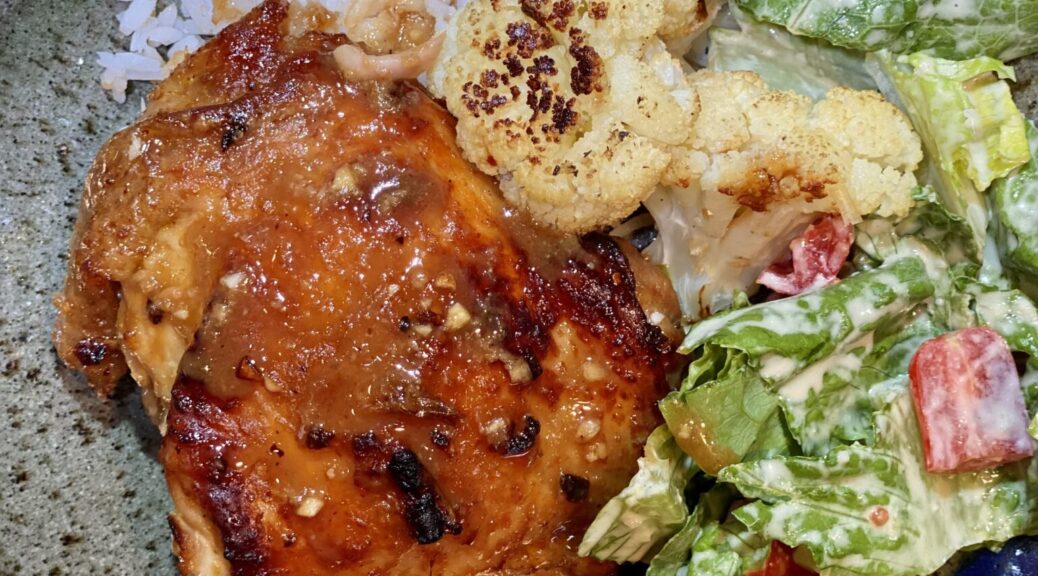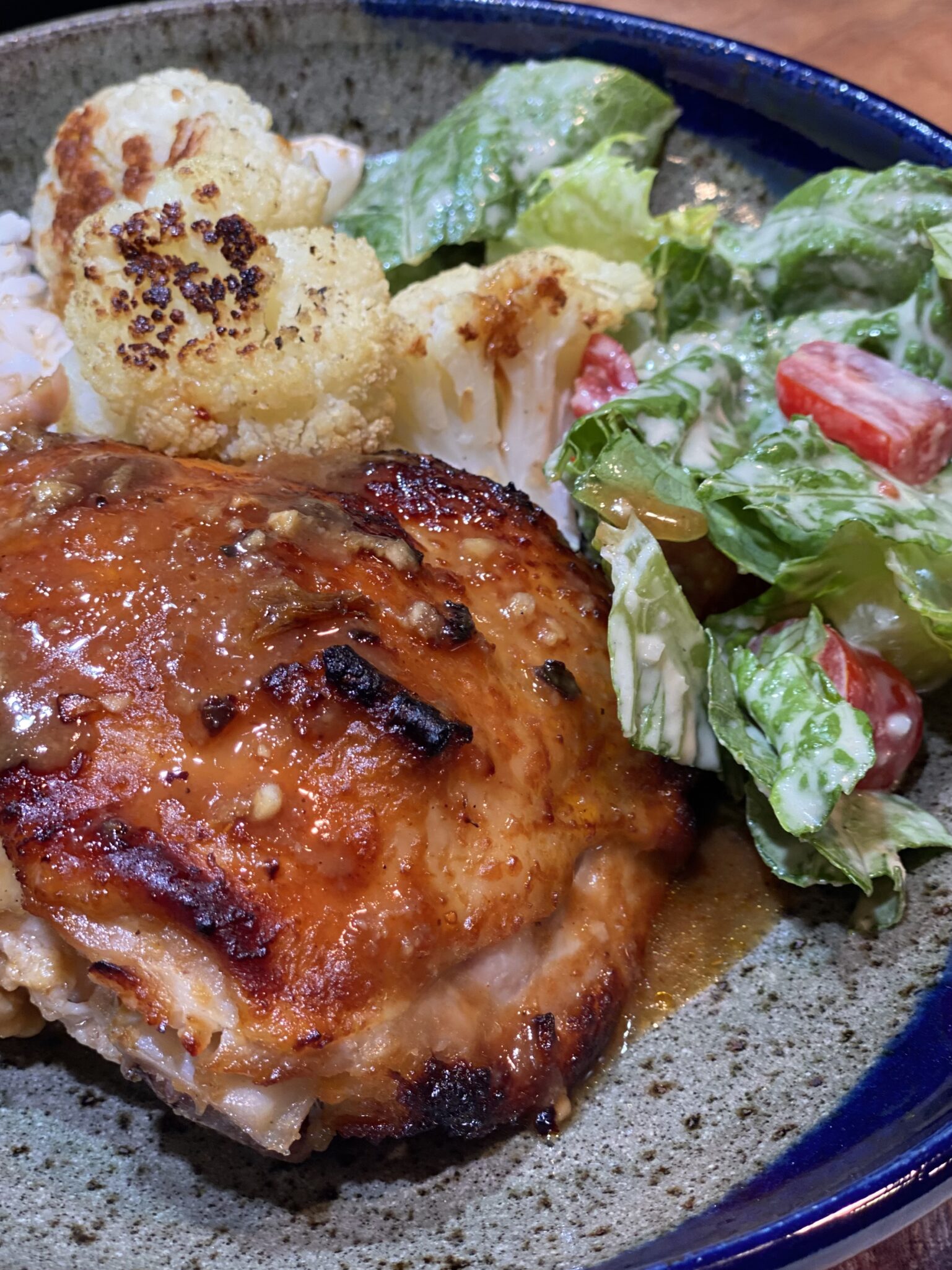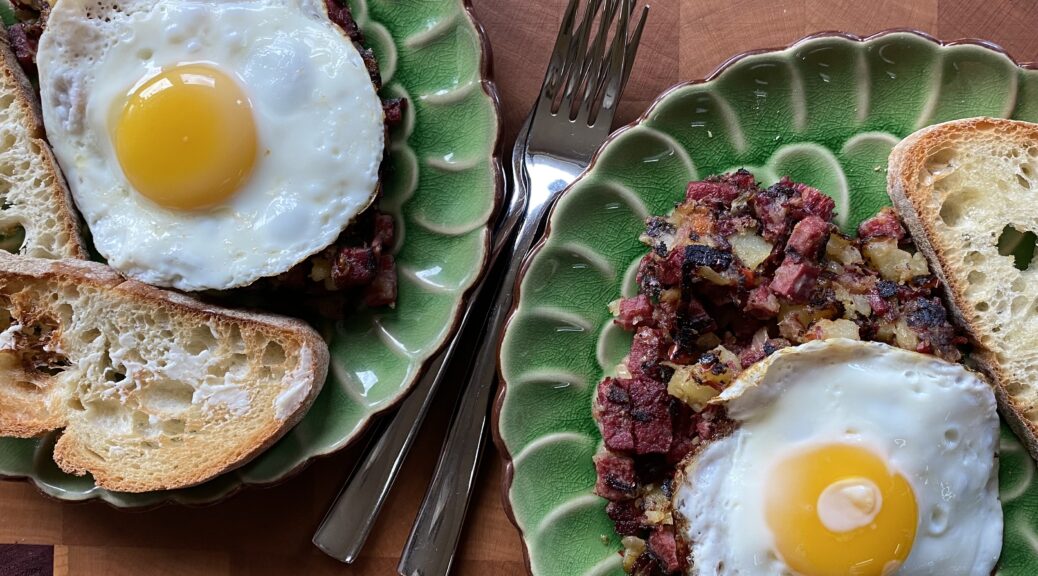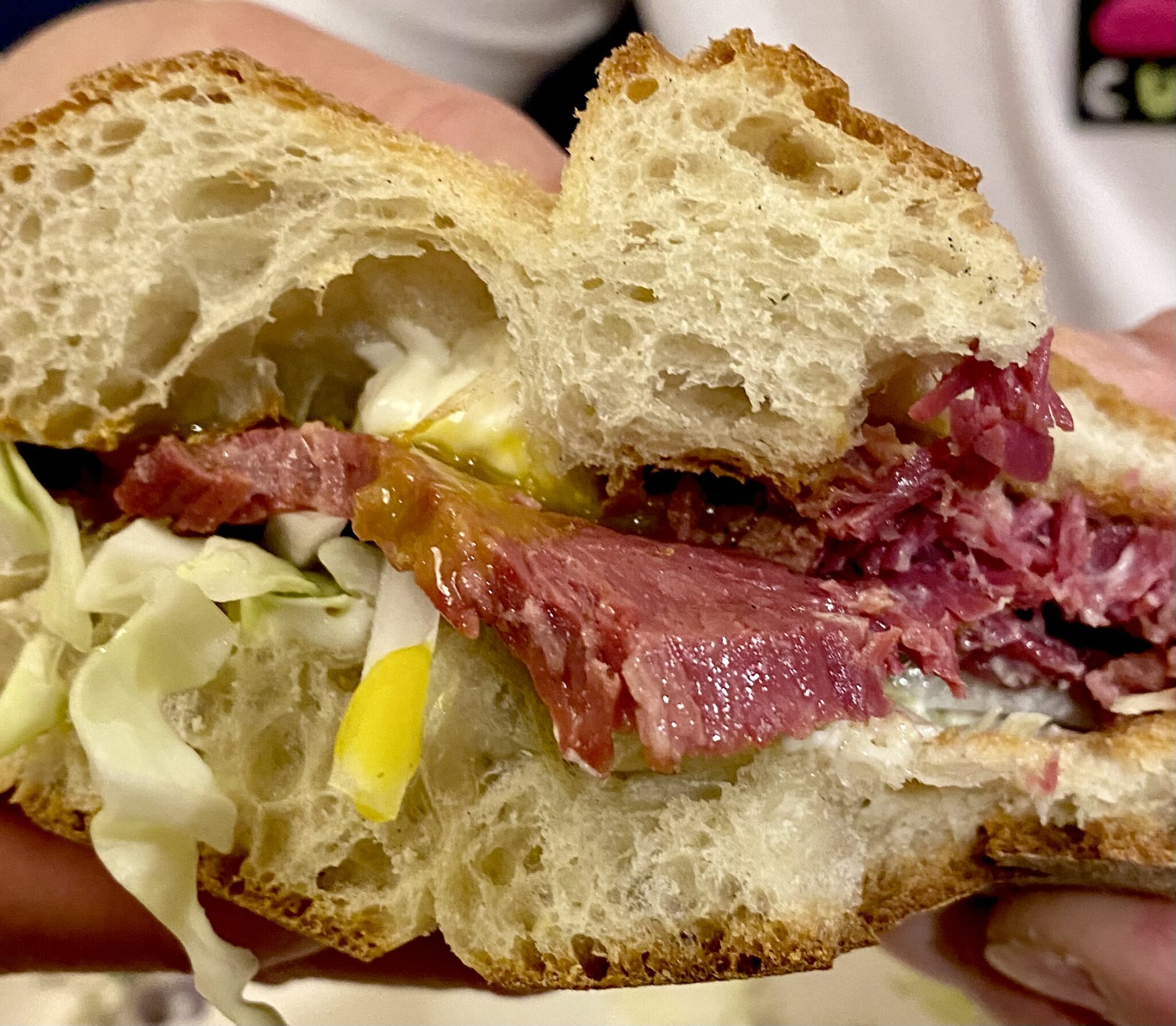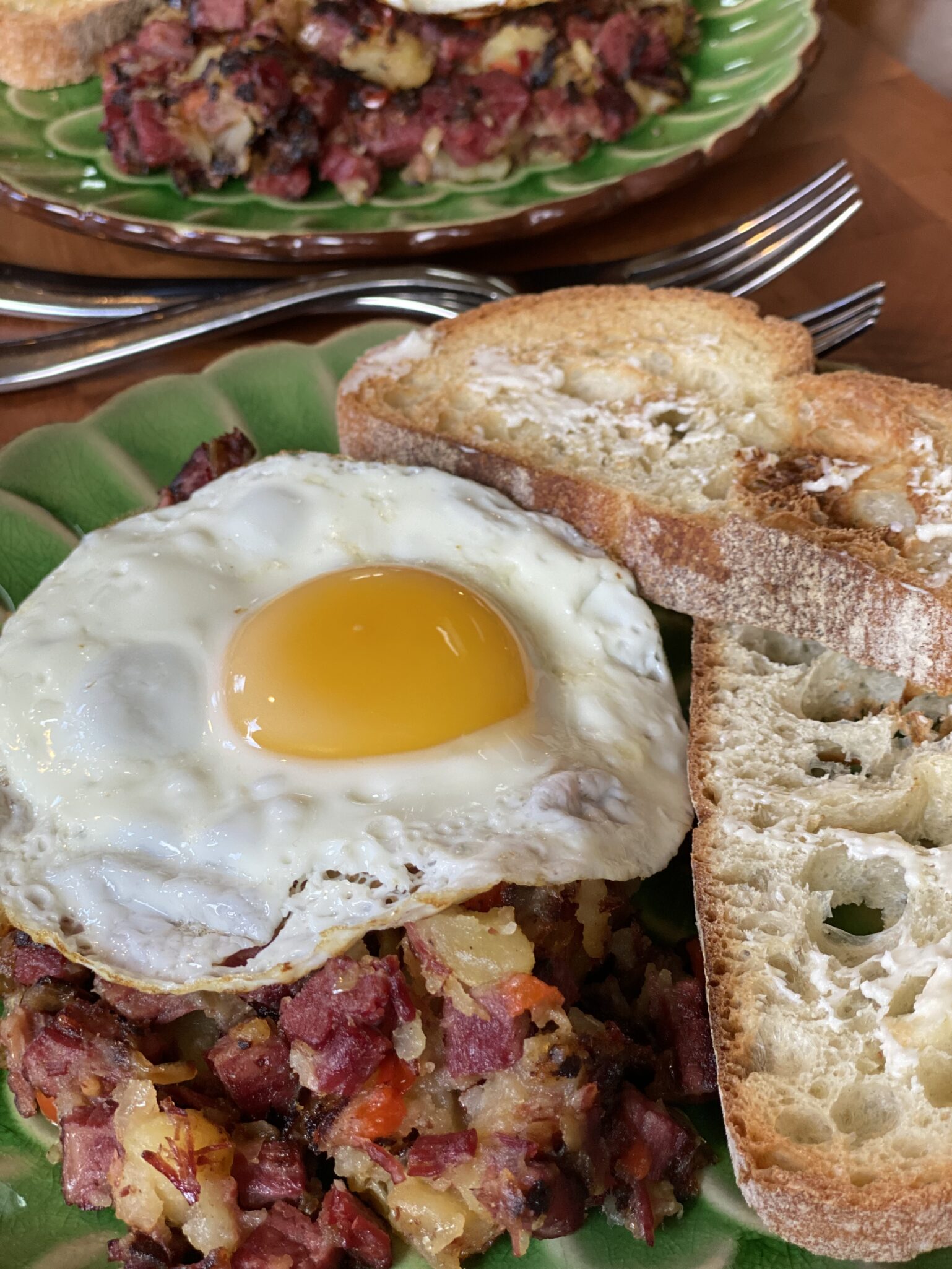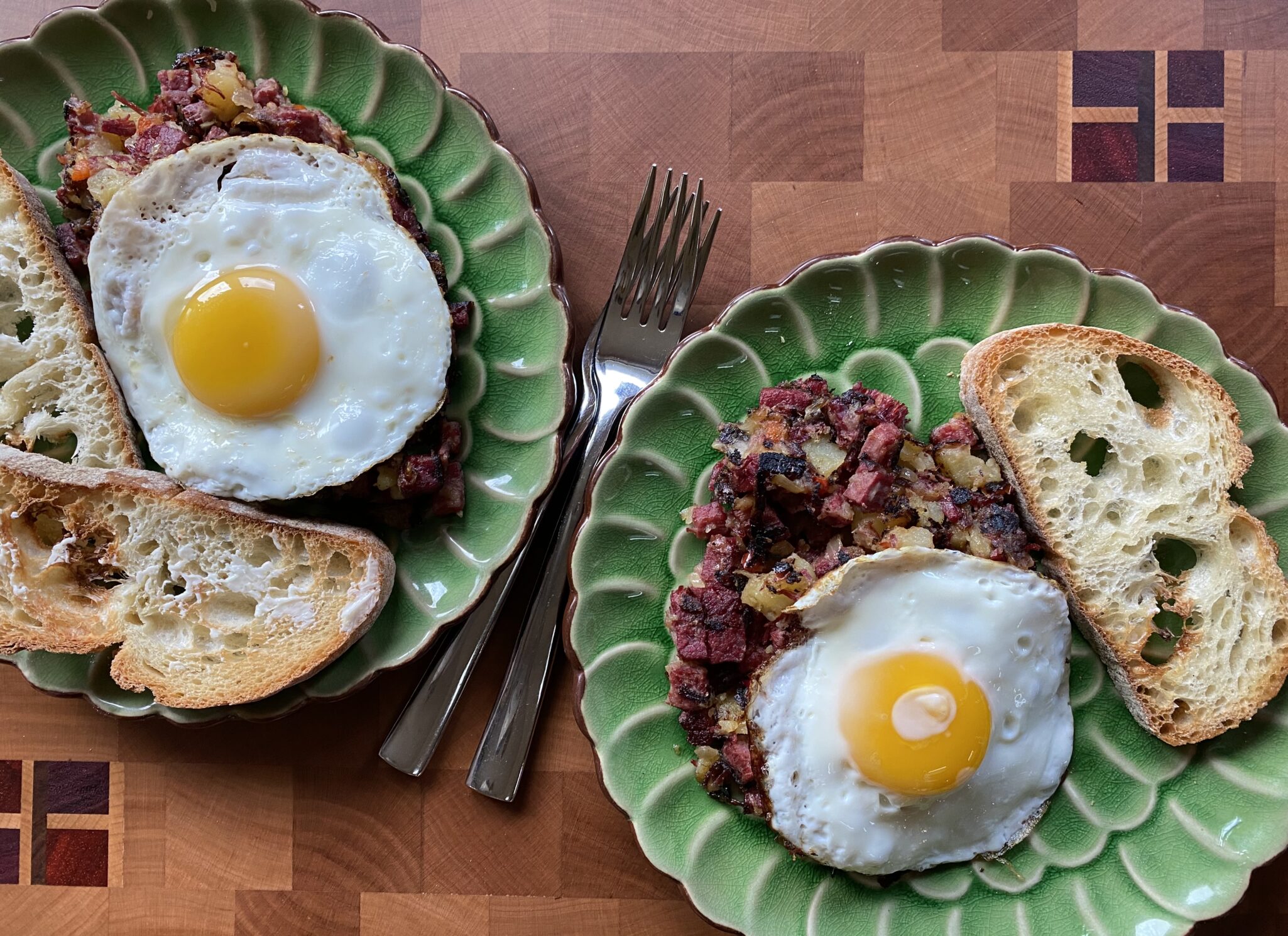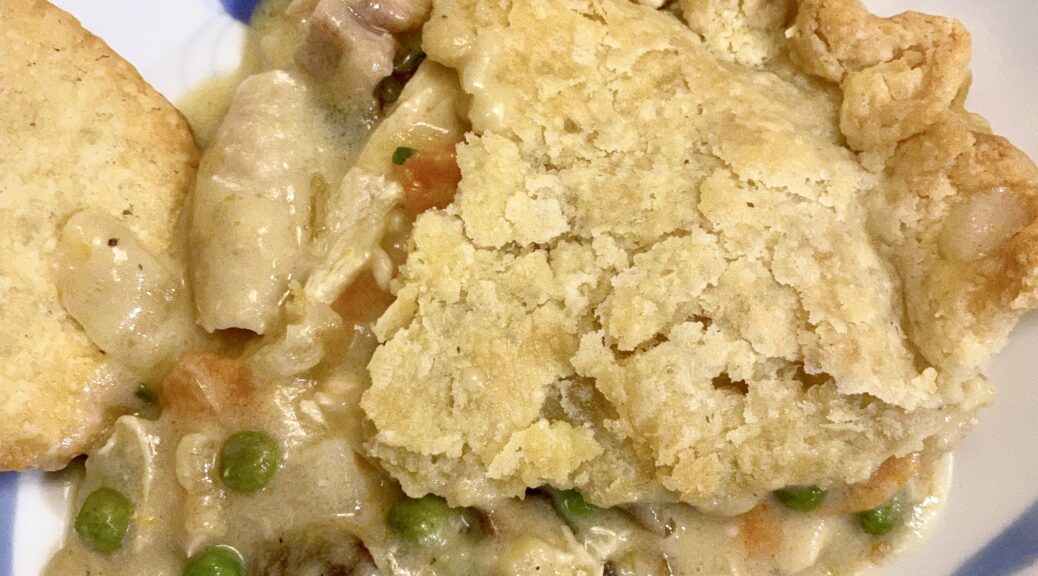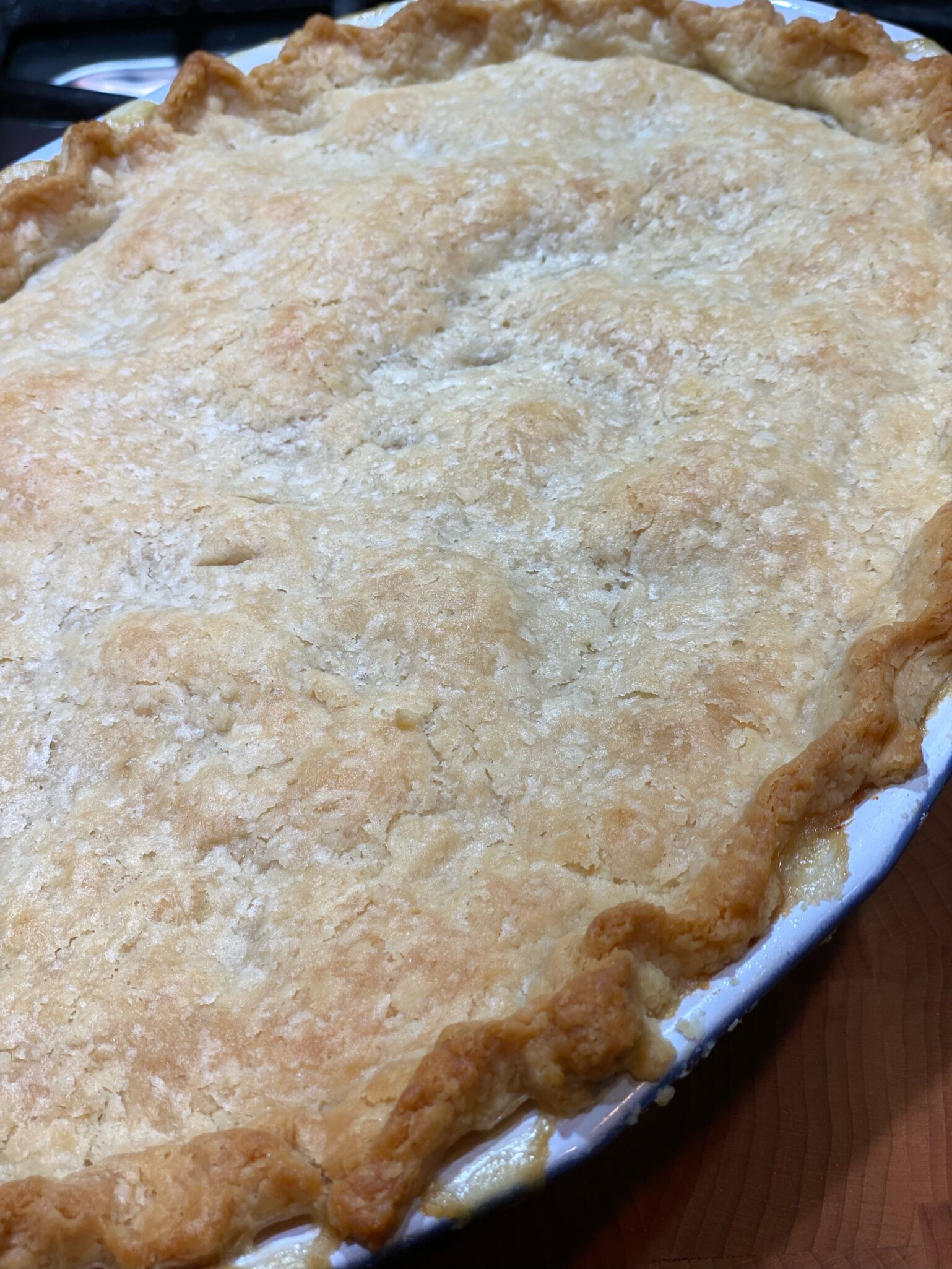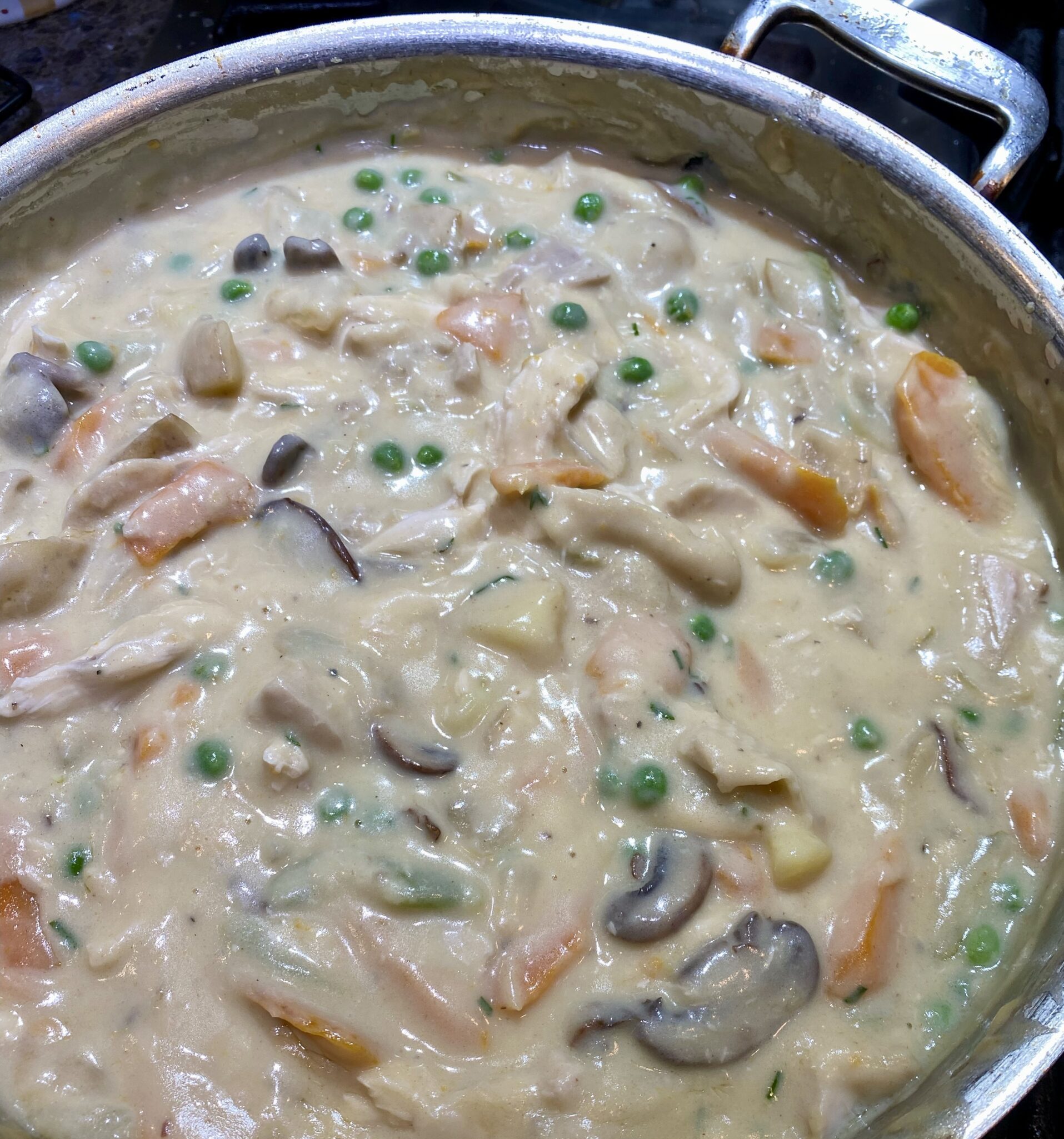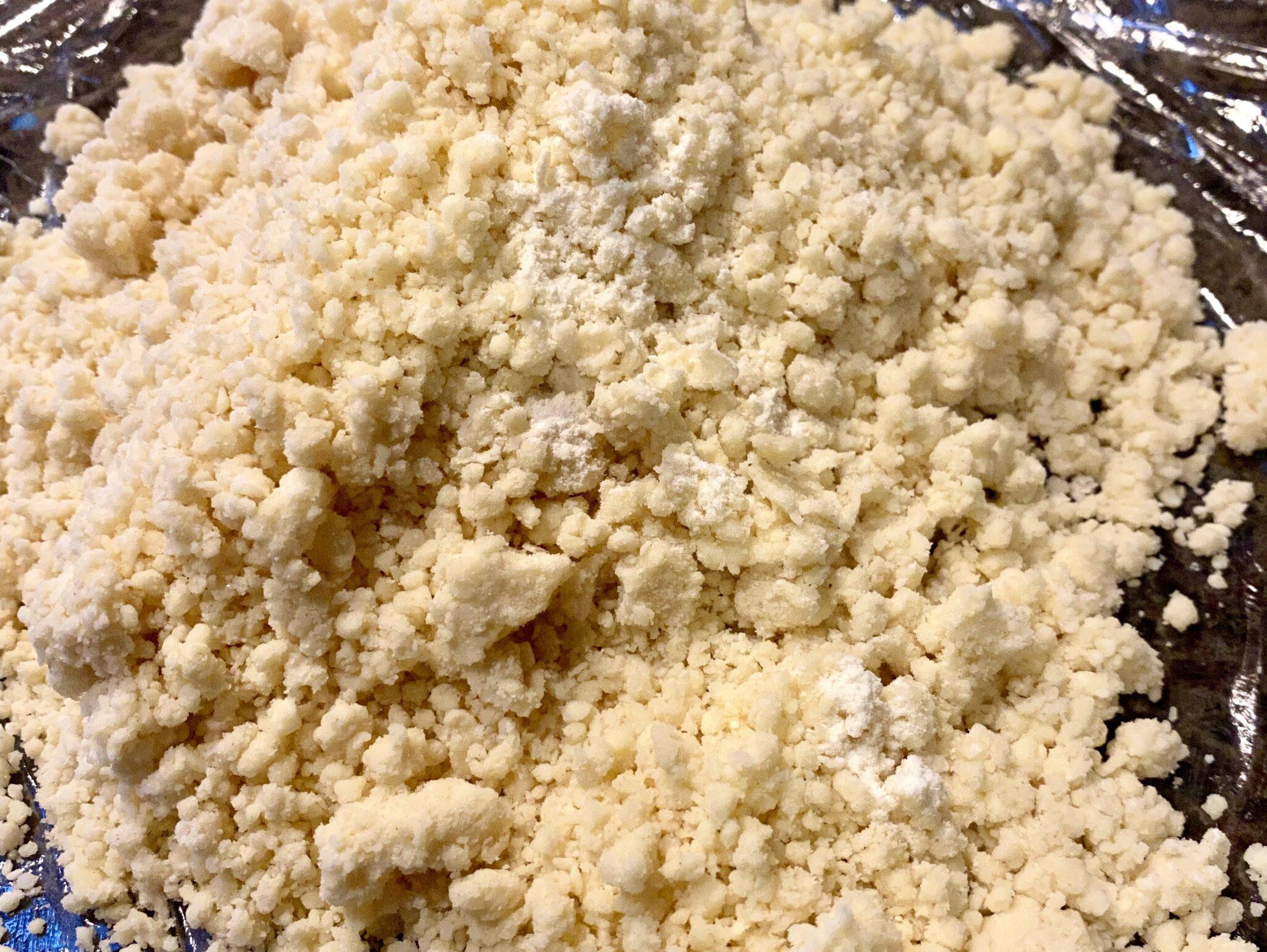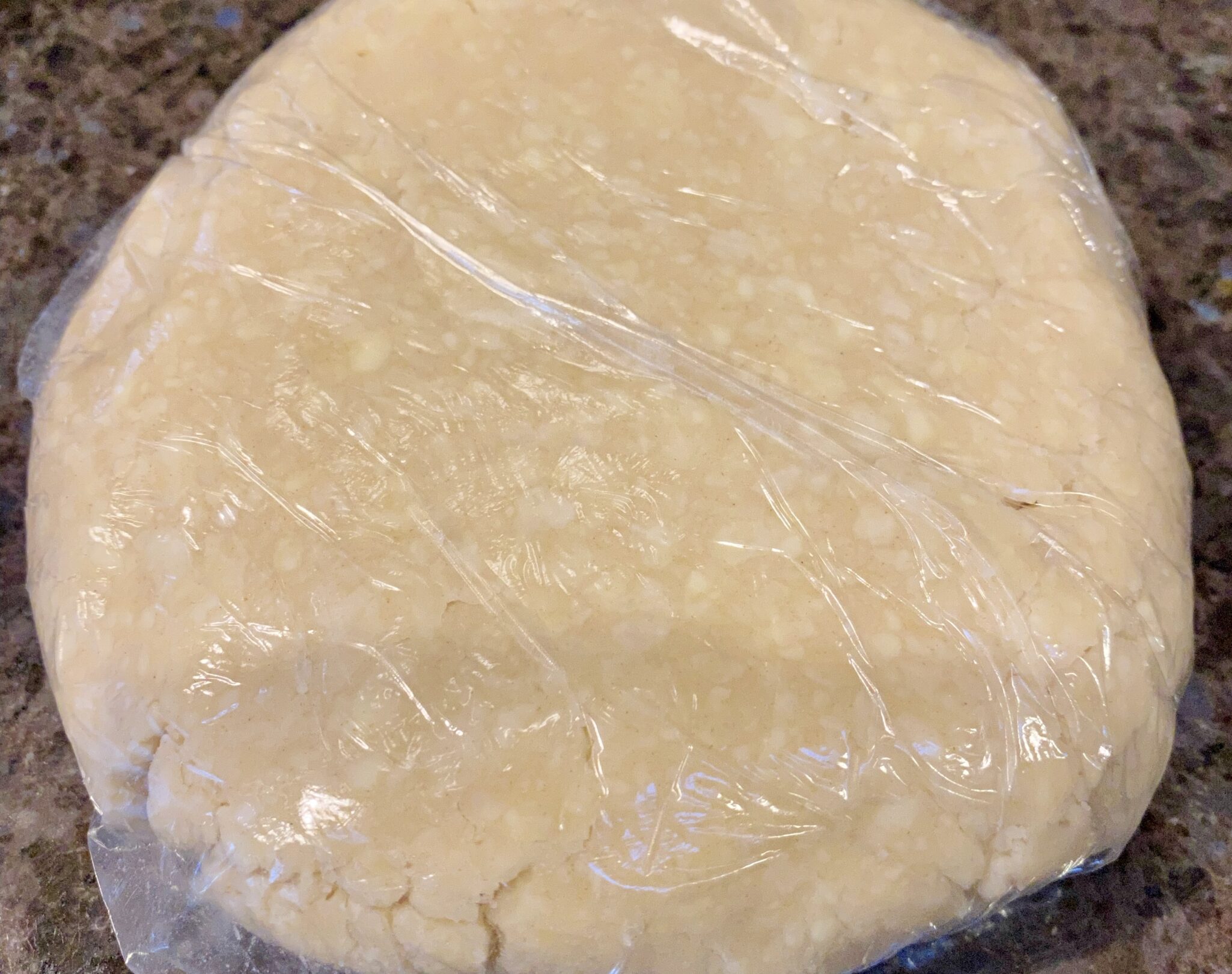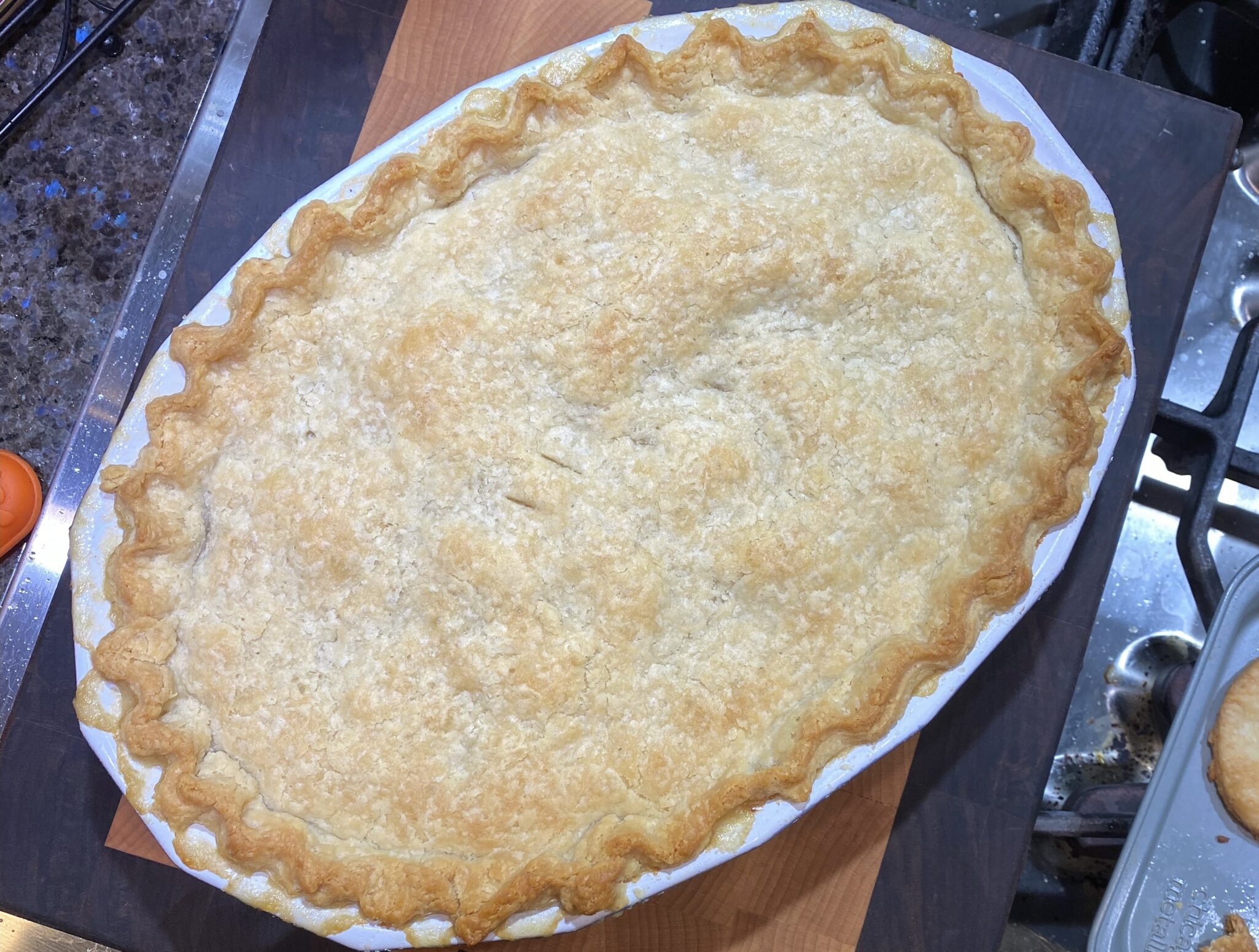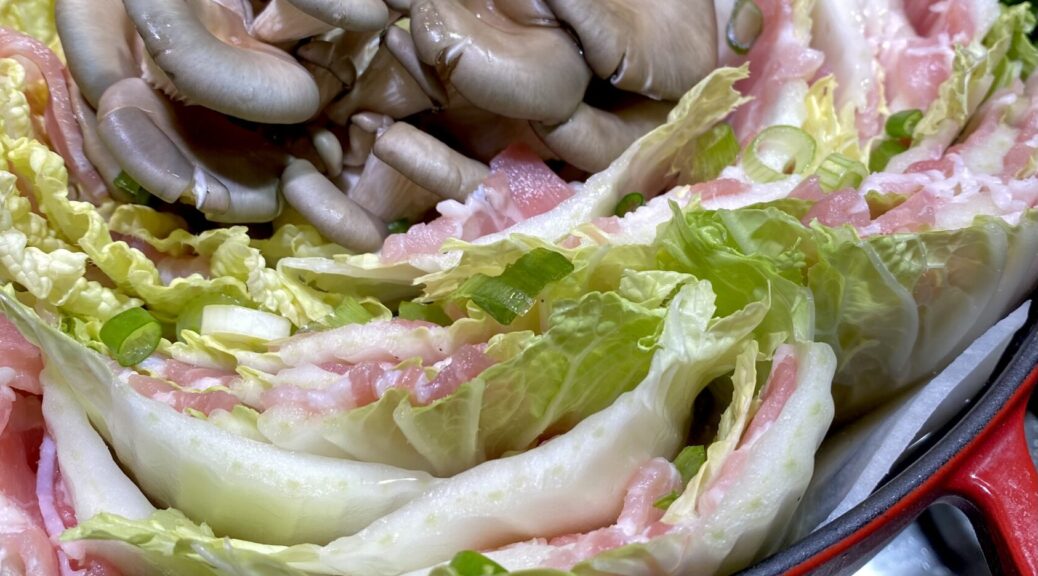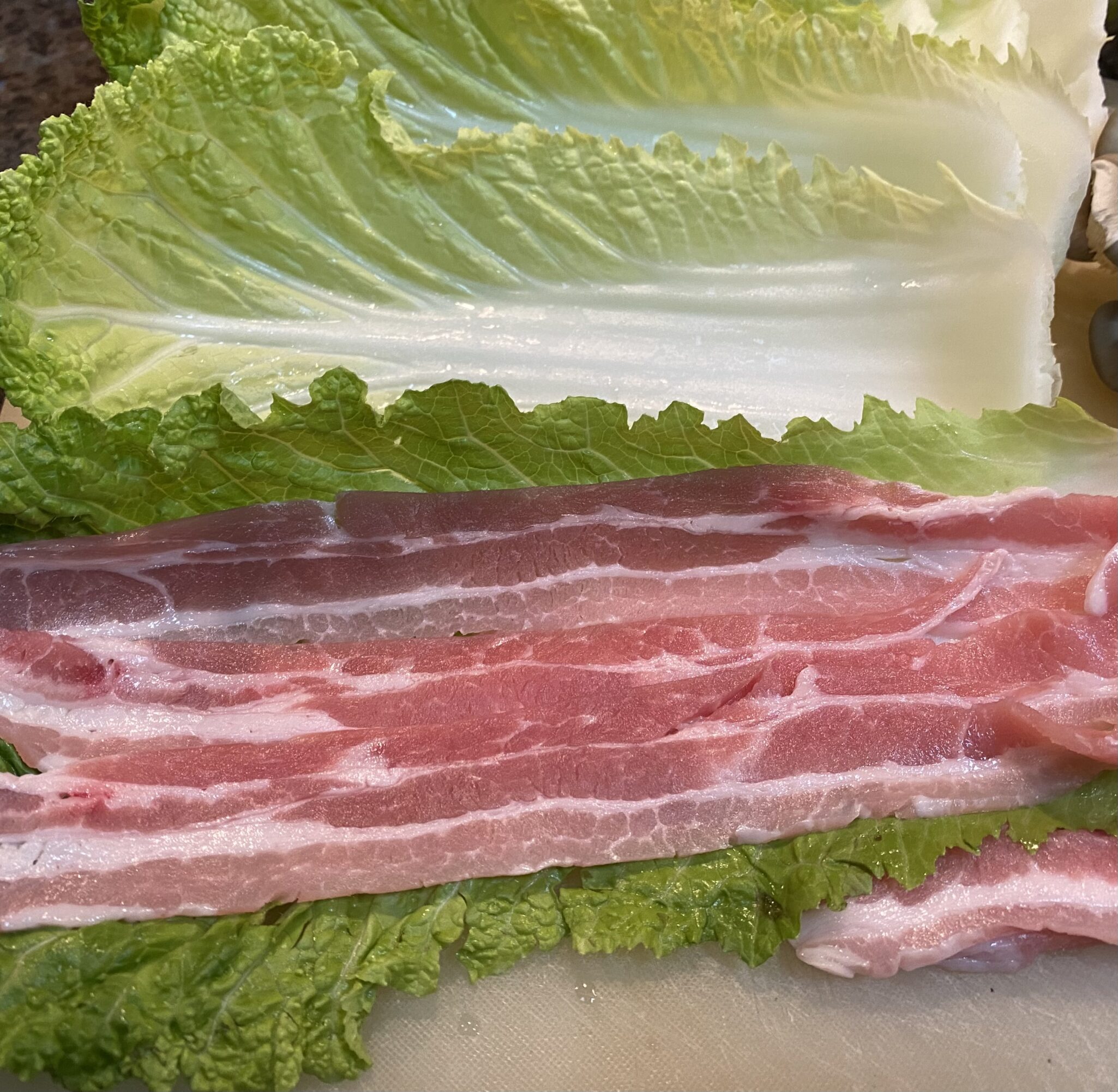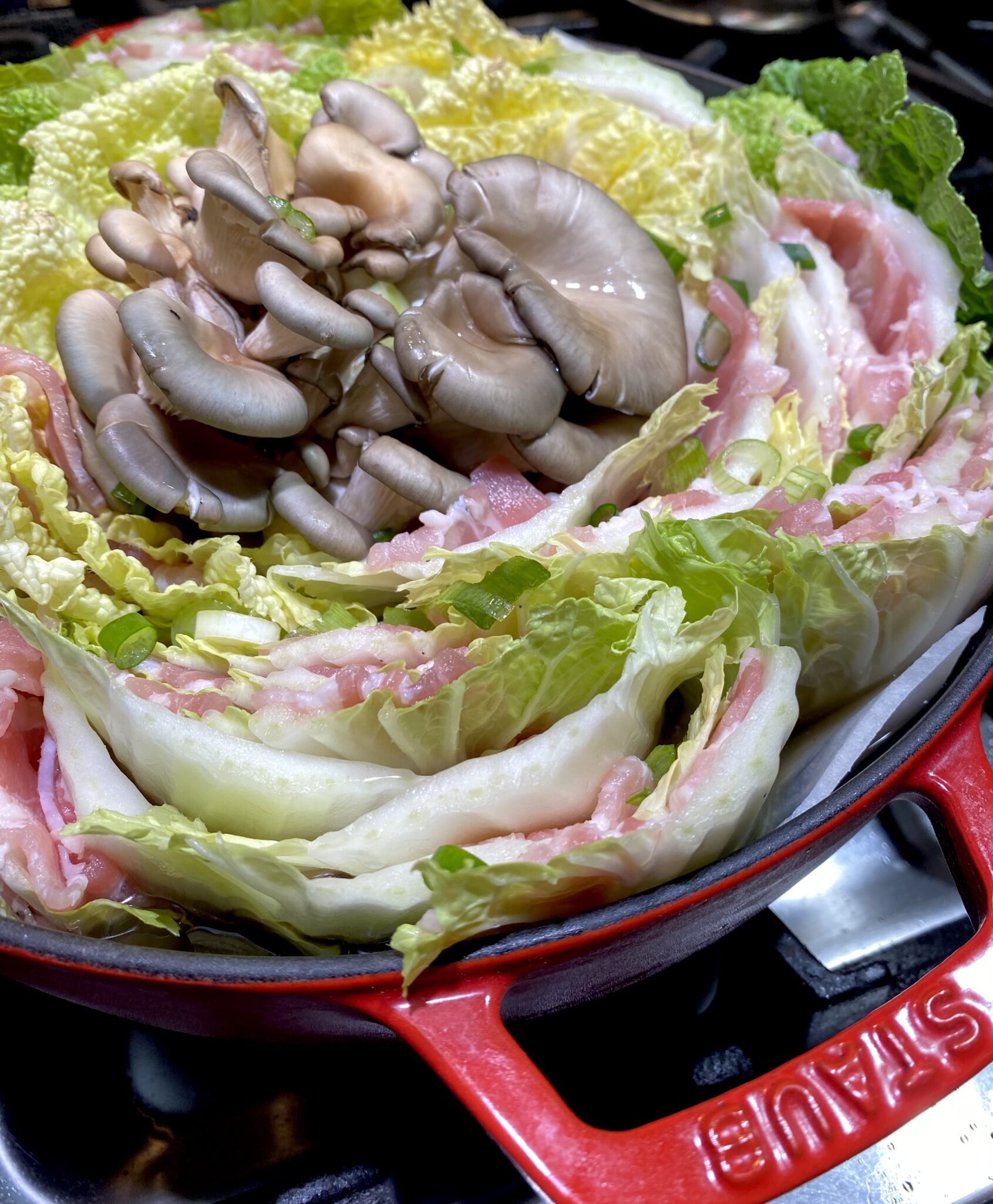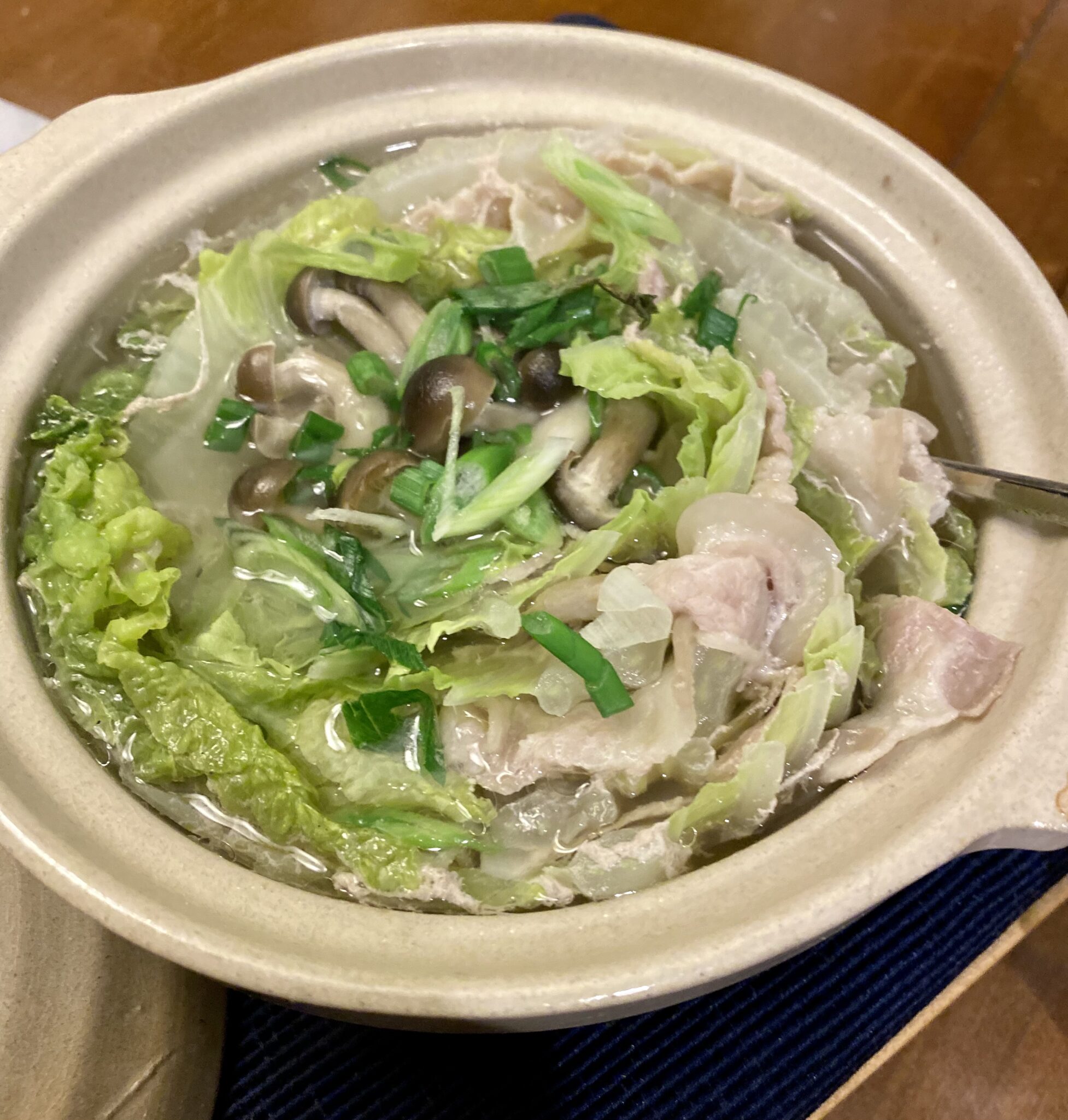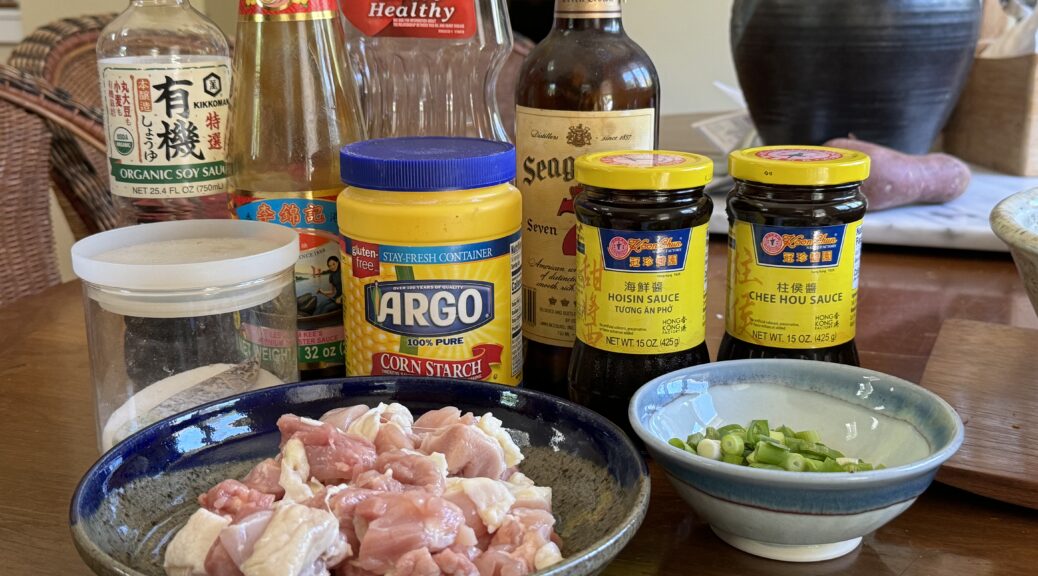
Paper Wrapped Chicken (Ji Bao Gai) That’s a Wrap! 纸包鸡
This is another dish from the hubster that lands on the favorite list for all three kids and me, Paper-wrapped chicken (纸包鸡) aka Foil-wrapped chicken. Wes learned how to make Ji Bao Gai from his mom during medical school. It’s a dish rarely found in restaurants, a true Cantonese down-home dish. So, if he wanted foil-wrapped chicken, he had to learn how to make it and that’s exactly what he did.
Cantonese Soul Food (Ji Bao Gai 纸包鸡)
Bite-sized pieces of chicken or beef are marinated in hoisin, sherry, soy sauce, sesame oil, and a touch of sugar. The chicken is then wrapped in foil or parchment into little packets and baked or fried. Think, mini Asian papillotes. The foil locks in the juices and infuses the chicken with flavor. Half the fun is unwrapping each packet and popping each tasty morsel in your mouth. In our house, it’s a race to see who eats the most packets.
This is Where I Come In
Things have come full circle from Wes’s mom teaching him to Wes now teaching the kids. “Dad, how do I make Ji Bao Gai, how do you fold the packets, where’s the recipe?” Whenever they want to make Ji Bao Gai they call Wes (maybe it’s a sweet ploy to talk to us, lol). They have yet to write the recipe down. All I can say is aiyah 🤦🏻♀️. I guess it must be time to post it on 3Jamigos. Now the kids don’t have to call each time they want to make a batch.
The Ingredients (as pictured in the banner photo)
Chicken: Boneless, skinless chicken thighs are perfect for this recipe as they remain juicy and tender, you can use chicken breast if you like, but decrease the cooking time a bit.
Marinade: Hoisin, and Chee Hou, are umami-filled sauces made from soybeans. Add soy sauce, oyster sauce, Shaoxing wine (or dry sherry), sesame oil, and a touch of sugar. I like adding minced garlic and ginger for that extra zing.
Aromatics: Green onions and a few slices of fresh lemon for a hint of citrus (very optional).
Optional: Add sliced water chestnuts for texture. Sprig of cilantro.
Foil: Use regular (Reynold’s) aluminum foil to create the perfect cooking pouch. Cut into 6” x 6” squares. Lucky you, there is a video below on how to wrap.
Riff: Also works with beef, use flank steak or skirt steak sliced thinly against the grain.
Prep, prep, prep your stuff
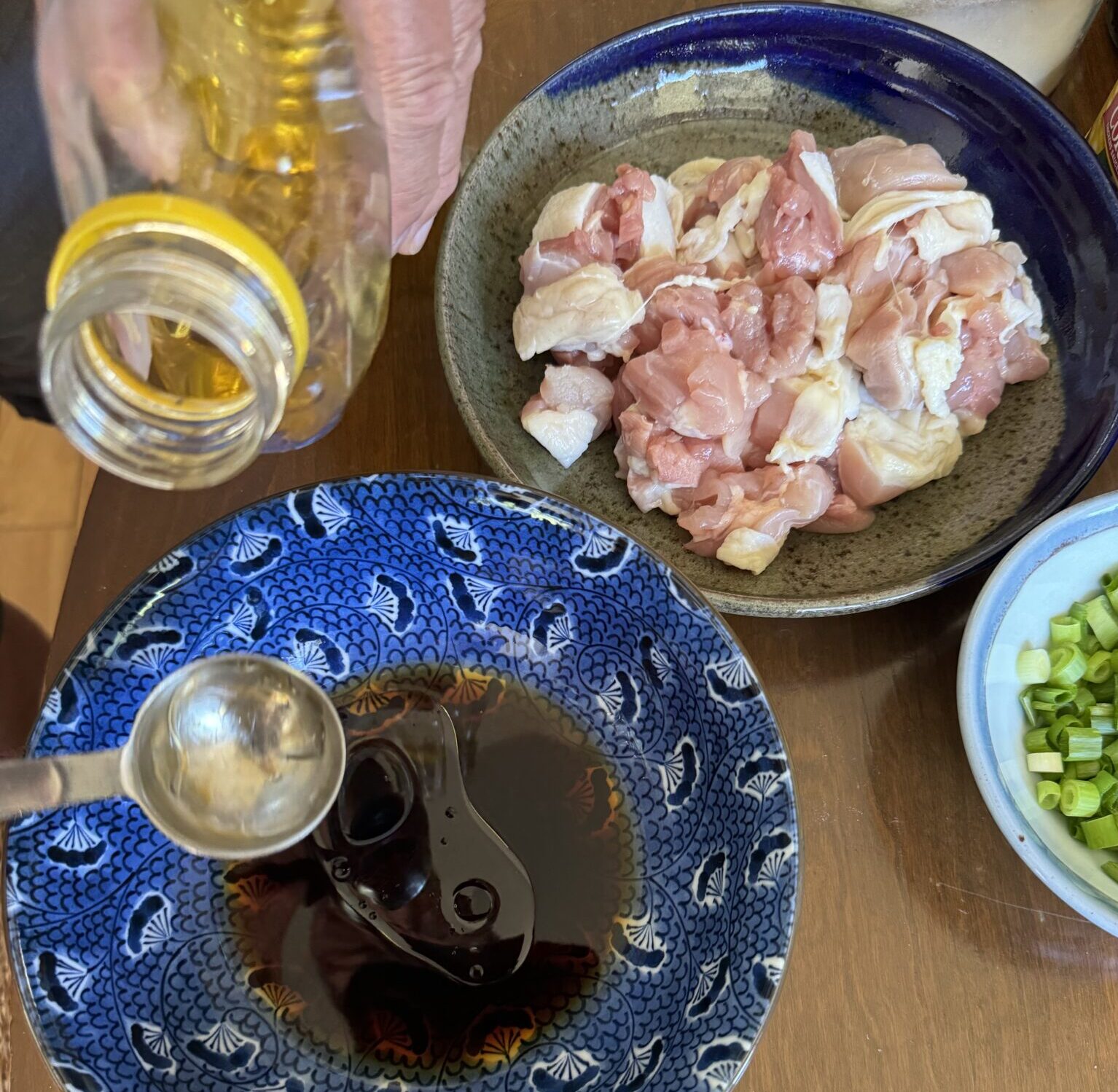
Step 1: Marinate the Chicken
Start by cutting the chicken into bite-sized pieces. Mix soy sauce, oyster sauce, Shaoxing wine, sesame oil, sugar, minced garlic, and ginger in a medium-sized bowl. Toss the chicken pieces in the flavorful marinade, make sure each piece is well coated. Cover and let it marinate in the refrigerator for at least 30 minutes, but for the best results, let it sit for 2-3 hours.
Step 2: Wrap It Up
Cut the aluminum foil into square sheets, roughly 6×6 inches. Regular-weight foil is fine. Place 2 pieces (if pieces are small, use 3) of chicken in the center of each foil sheet. Add a slice of green onion and water chestnut or a sprig of cilantro (optional). Fold the foil over the chicken, then fold the open edges together, approximately 1/8 inch, twice, thereby creating a nice seal and ensuring juices can’t escape during baking. Try to eliminate as much air from the packet as you fold.
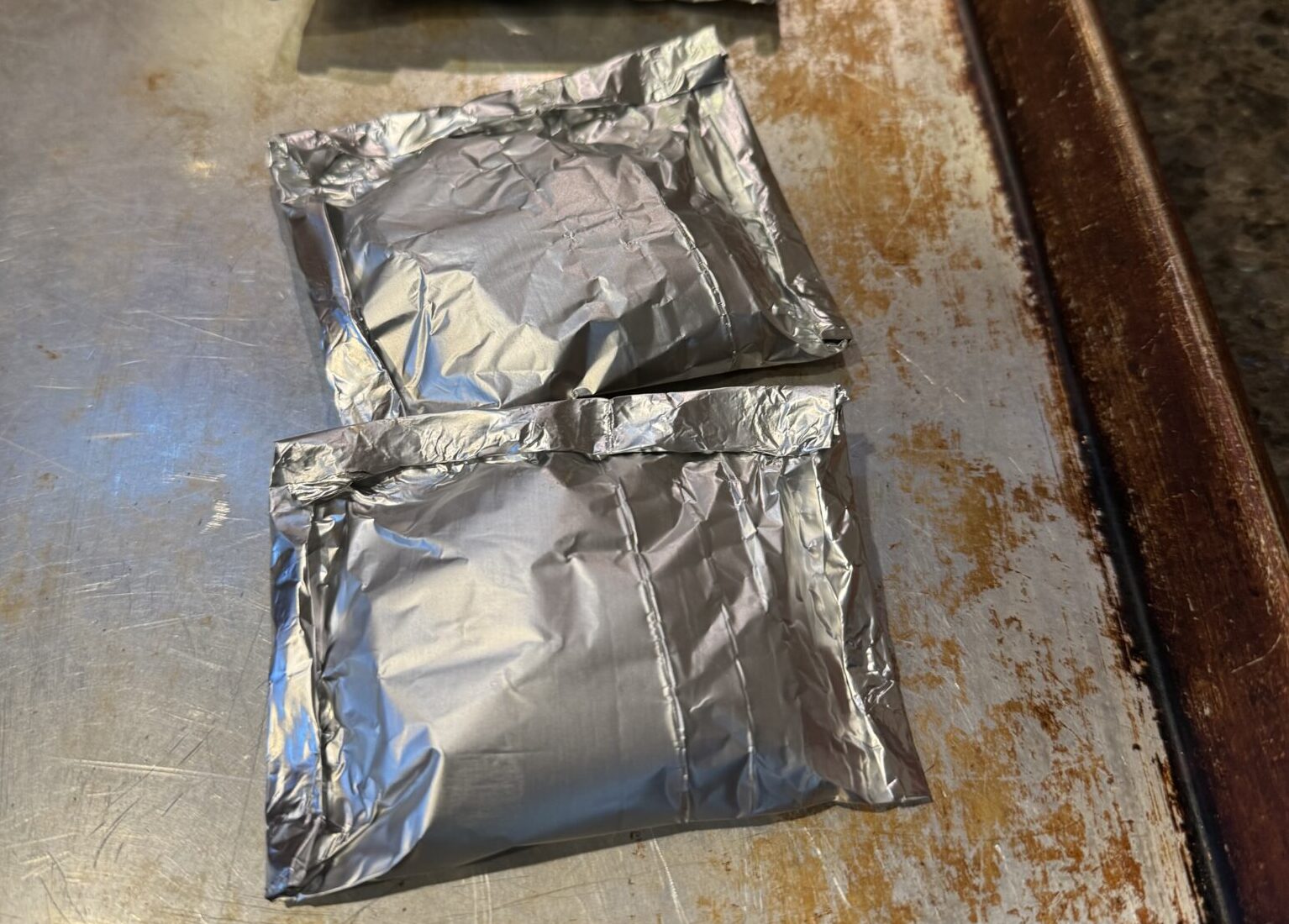
Step 3: Bake to Perfection
Preheat your oven to 350°F. Arrange the foil-wrapped chicken parcels on a baking sheet. Bake for 9 minutes, then flip packets and bake for 4 minutes or until the chicken is cooked through and tender. The foil will puff up slightly as the chicken cooks, creating a steamy environment that keeps the meat juicy and flavorful. In the good old days, the packets were deep-fried. This created a crispier exterior on the chicken. For crispier edges, bake at 400 degrees for about the same amount of time.
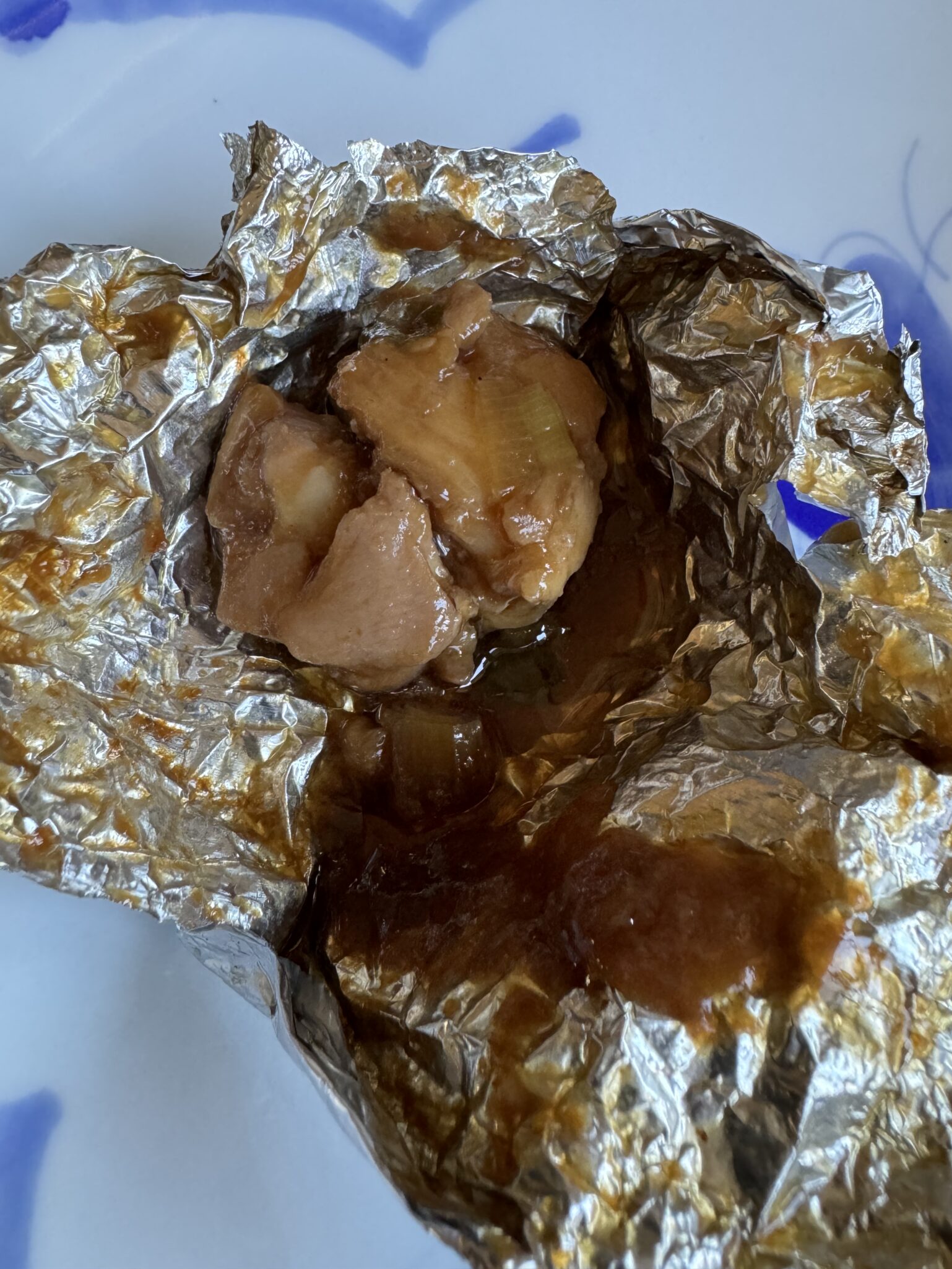
I would have taken a nicer photo except the kids ate them all before I could.
Step 4: Unwrap and Enjoy
Once done, remove the parcels from the oven and let them rest for a few minutes. Carefully open the foil, allowing the fragrant steam to escape. Serve the chicken with a side of steamed rice and your favorite vegetables. Make sure to open the packets over your bowl or plate of rice to catch the sauce. Yum.
Tips for Success
Marinade for 2-3 hours, not much longer as the chicken will get too salty.
Sealing the Foil: Seal the foil tightly to prevent juice from escaping.
Experiment: Don’t be afraid to add your twist to the marinade. A dash of chili sauce or a sprinkle of fresh herbs can add a new dimension.
Foil Wrapped Chicken: A Flavor-Packed Journey in Your Kitchen
Ingredients
- 2-3 Chicken breasts although we prefer thighs or thighs 4-5
Marinade
- 3 tablespoons Chee Hou Sauce
- 2 tablespoons Oyster sauce
- 2 tablespoons Soy sauce
- 2 tablespoons vegetable oil
- 2 tablespoons whiskey (Seagrams) or Shao Xing Wine
- 1 tablespoons Hoisin sauce
- 1 tablespoon granulated sugar
- 1 tablespoon salt
- 3 tablespoons cornstarch
- 1/4 cup water
- 2 Green Onions diced
Instructions
- Debone chicken and cut into small pieces.
- Mix in ingredients and marinate for at least two hours. Wrap in foil to create a closed packet.
- Deep fry medium-high heat around 1 minute until the chicken packets float OR
- Bake at 400 for 10 minutes, flip and bake another 5 minutes
